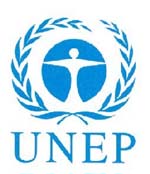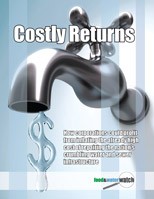News
Let Us Now Praise ... Ralph Nader
Sep 30, 2008
 All Together Now bestows our Golden A on individuals who have devoted their professional lives to bringing about a world we believe in: a world of compassion and hope and cooperation; of liberty and justice; without bullies or unearned privilege or despair; where no one is allowed to go hungry or uneducated or to brutalize their fellows, physically or economically. Our awardees have foregone physical comforts in pursuit of their beliefs and of our common interests.
All Together Now bestows our Golden A on individuals who have devoted their professional lives to bringing about a world we believe in: a world of compassion and hope and cooperation; of liberty and justice; without bullies or unearned privilege or despair; where no one is allowed to go hungry or uneducated or to brutalize their fellows, physically or economically. Our awardees have foregone physical comforts in pursuit of their beliefs and of our common interests.
No one better epitomizes these qualities than Ralph Nader. With his early success with Unsafe at Any Speed, the book that revealed fatal design flaws in the automobile industry, and the $425,000 he won from General Motors in a subsequent invasion-of-privacy suit, Nader established the first of over 100 nonprofit organizations devoted to fighting for the public interest of all citizens. His work was instrumental in establishing the National Highway Traffic Safety Administration, the Occupational Safety and Health Administration, the Environmental Protection Agency, the Consumer Product Safety Commission, and the Safe Drinking Water Act, among others.
In his three major campaigns for the presidency, he has spoken in the voice of the American middle class against a plutocratic corporate/governmental complex that has hijacked our country; stifled our economic growth; engaged us in endless war; and enriched itself beyond the dreams of European aristocracy or Asian potentates. American moral leadership is in tatters and our economic leadership has vanished in the pincer of emerging capitalist giants abroad and gross financial mismanagement at home.
 For his lifelong devotion to the bedrock principles of democracy, that all citizens are created equal and that government is the servant of the people; for his tireless and eloquent struggle against corporate hegemony; for the inspiration that has brought generations of young people to his side to fight entrenched one-party rule in Washington; and for the solid legislative successes which have held the line on an even more oppressive and exploitative ruling class, we award Ralph Nader our fourth “Golden A” for Achievement.
For his lifelong devotion to the bedrock principles of democracy, that all citizens are created equal and that government is the servant of the people; for his tireless and eloquent struggle against corporate hegemony; for the inspiration that has brought generations of young people to his side to fight entrenched one-party rule in Washington; and for the solid legislative successes which have held the line on an even more oppressive and exploitative ruling class, we award Ralph Nader our fourth “Golden A” for Achievement.
It Can Happen Here; It Is Happening Here
Sep 29, 2008
 A popular government, without popular information, or the means of acquiring it, is but a Prologue to a Farce or a Tragedy, or perhaps both. —James Madison, 1822
A popular government, without popular information, or the means of acquiring it, is but a Prologue to a Farce or a Tragedy, or perhaps both. —James Madison, 1822
Without transparency in government, there is no accountability. This administration has specialized in secrecy, opacity, and non-accountability. Utilizing 9/11 in a cynical power grab, it rushed Congress and the American people into the Patriot Act—dismantling basic Constitutional freedoms—and a unilateral war against a non-aggressor. As this item is being written (September 26), it is going for the hat trick, using the burst housing bubble, which it engineered, to take secret control of our economy, with no transparency and no legal or congressional oversight.
The Paulsen plan, if enacted in its essence with only minor amendments, will destroy the underpinnings of our country’s economy. When government is in bed with industry, the former supported by the profits of the latter, and the latter protected against losses by the former, when risk is removed from the capitalist equation by the governing body, the political system can no longer be called a democracy and the economic system can no longer be called capitalism. What they amount to then is plainly and simply fascism.
The Century Foundation—too late, perhaps?—has just released a report entitled Reinventing Transparent Government, written by Patrick Radden Keefe. It details the extraordinary lengths to which the Bush administration has gone in blanketing our government in secrecy, and makes five recommendations for beginning the task of returning transparency, and thus accountability, to our government:
- Create a national declassification center and database
- Establish transparency and oversight in government budgets and contracts
- Clarify a uniform set of definitions for sensitive but unclassified information
- Reinvigorate the Freedom of Information Act
- Rein in the use of the State Secrets Doctrine
—Benjamin Franklin.
This, of course, is exactly what we have done, in buckling under to the Patriot Act and its extension, in tolerating a war of aggression against an “enemy” who has been sold to us as boldly and baldly as we are sold deodorant, and, now perhaps, in handing over our economic vitality to an administration which has stripped our government of all accountability in the name of national security.
We will have no one to blame but ourselves when the jackboots and the brownshirts bring Crystalnacht to the American heartland.
Outta My Way, Smokey!
Sep 28, 2008
 Take a beautiful winter landscape, cold, quiet, white, and pristine, filled with protected wildlife and a wealth of natural phenomena such as geysers and hot springs. As the wonder and peace and magnificence of the place lifts your heart with joy, off stage left comes a sound rather like a large mosquito, louder, then louder, until what appears to be a sled comes crashing into your vision, tearing at 40 miles per hour over the virgin snow, passing in front of you, so loud you can’t hear yourself asking your companion what it is all about, then fades away in a smelly cloud of exhaust off stage right.
Take a beautiful winter landscape, cold, quiet, white, and pristine, filled with protected wildlife and a wealth of natural phenomena such as geysers and hot springs. As the wonder and peace and magnificence of the place lifts your heart with joy, off stage left comes a sound rather like a large mosquito, louder, then louder, until what appears to be a sled comes crashing into your vision, tearing at 40 miles per hour over the virgin snow, passing in front of you, so loud you can’t hear yourself asking your companion what it is all about, then fades away in a smelly cloud of exhaust off stage right.
Until recently, this was the Bush idea of a good time at Yellowstone National Park. Then, on September 15, the U.S. District Court for the District of Columbia ruled that the Bush Administration’s decision authorizing snowmobile use in Yellowstone violated the National Park Service’s responsibility to protect the clean air, wildlife, and natural quiet of national parks. A link to the decision may be found on the site of the Greater Yellowstone Coalition. The decision was written by Emmet G. Sullivan, who was appointed to various benches by Reagan, Bush I, and Clinton.
Though he has spent his life in Washington, D.C., he is a mighty friend of America. Thank you, Judge Sullivan!
Voters in the Hands of an Angry God
Sep 27, 2008
 Tomorrow, pastors in 20 states will give politically based sermons in protest of the IRS’s rule disallowing 501(c)(3) organizations from participating in political activities. Should any of the churches then have their 501(c)(3) status withdrawn by the IRS, the organizers of the protest, the Alliance Defense Fund (ADF), is expected to bring suit challenging the constitutionality of the penalties.
Tomorrow, pastors in 20 states will give politically based sermons in protest of the IRS’s rule disallowing 501(c)(3) organizations from participating in political activities. Should any of the churches then have their 501(c)(3) status withdrawn by the IRS, the organizers of the protest, the Alliance Defense Fund (ADF), is expected to bring suit challenging the constitutionality of the penalties.
The ADF, like most such outfits, is a tireless defender of a small selection of freedoms, including the freedom to require the American taxpayer to underwrite political proselytizing on behalf of radical religious groups.
The Pew Forum on Religion & Public Life provides us with a a cogent analysis of ADF’s plans. Pastors to Protest IRS Rules on Political Advocacy features an excellent interview with Robert W. Tuttle, law professor at George Washington University Law School who holds a slew of degrees in law and religion. Professor Tuttle weighs the pros and cons of the possible law suit, concluding that it probably would not be successful.
Given the current constitution of the Court, however, one cannot be too sure.
Update: More than two dozen pastors challenged the IRA on September 28, some of them endorsing a candidate. The next day, Americans United For Separation of Church and State filed complaints with the IRS regarding six of the sermons.1
____________________
1 Americans Wary of Church Involvement in Partisan Politics, from The Pew Forum on Religion and Public life, October 1, 2008 (Accessed October 5, 2008)
Green Is Gold
Sep 26, 2008
 Remember that check you got from Uncle Sam last summer, the one that was going to jump-start the economy and get it back in shape? How’s that working out?
Remember that check you got from Uncle Sam last summer, the one that was going to jump-start the economy and get it back in shape? How’s that working out?
Okay, never mind. However, we could have taken that roughly $100 billion and put it into a plan devised by the Center for American Progress and the Political Economy Research Institute (PERI) at the University of Massachusetts/Amherst. For the same amount of money, raised through auctioning off carbon permits, we could invest in the following six energy strategies:
- Retrofitting buildings to improve energy efficiency
- Expanding mass transit and freight rail
- Constructing “smart” electrical grid transmission systems
- Wind power
- Solar power
- Next-generation biofuels
The road to recovery is paved with gold, if we can find ourselves a way around the dead end that is the fossil fuel-based economy.
Capitalism and the Future of Democracy
Sep 25, 2008
 Capitalism is either the servant or the master of the people. When it is the master, as it has been throughout its existence in China, and as it has been, once again, throughout the last thirty years in the United States, the results are disastrous. We will take up China, with its rampant pollution; its countryside in chaotic, open revolt; its scrambling and scattershot repression; its suborning of global industry, at a later date. Home is where our heart is.
Capitalism is either the servant or the master of the people. When it is the master, as it has been throughout its existence in China, and as it has been, once again, throughout the last thirty years in the United States, the results are disastrous. We will take up China, with its rampant pollution; its countryside in chaotic, open revolt; its scrambling and scattershot repression; its suborning of global industry, at a later date. Home is where our heart is.
A government of the people, by the people, and for the people devotes its institutions—social, economic, and political—to the general welfare and improvement of its citizenry—that is its purpose and its reason for being. Its institutions exist to ensure that all the people have adequate housing, nutrition, sanitation, education, mobility, economic opportunities, and protection from economic and physical threats from within and without. If they exist for any other reason—say, to enrich a small plutocracy at the expense of the people, their environment, and the future of the planet—then it is not a government of, by, and for the people nor, to the extent the plutocracy has a stranglehold on that government’s institutions, can it be said to be a democracy.
In 2008, five weeks and five days before a national election, our democracy is on the brink of dissolution. The plutocracy that has dominated our government since 1980 has brought us perpetual war,1 global economic collapse,2 a ten trillion dollar deficit with more trillions to come,3 and a suspended Constitution. The Democratic takeover of Congress in 2006 has done nothing to stem the tide of these developments. Nor does either major presidential candidate question the fundamental misdirection of our nation or acknowledge its expropriation by an international corporate plutocracy.
The only candidate who does—Ralph Nader—will not be elected. And so, during the next administration, we will enter a fourth decade of corporate hegemony over American democratic institutions. Whether this will bring about worldwide depression, devastating global conflicts, or the final deterioration of the American moral example, no one can say. However, it will surely not result in the pursuit or realization of those goals noted above, the only goals to which a democratic government can, or should, aspire.
____________________
1 Perpetual War, from Wikipedia (“Perpetual war is a war with no clear ending conditions. It also describes a situation of ongoing tension that seems likely to escalate at any moment, similar to the Cold War.”) (Accessed September 21, 2008)
2 Can American Afford It?, by Robert Gavin, from the Boston Globe, September 21, 2008 (“The crisis, which began in the nation’s housing bust and spread into credit and stock markets, is pushing the global financial system to the brink of collapse....”) (Accessed September 21, 2008)
3 The U.S. National Debt Clock (Accessed September 21, 2008)
Where Will It All End?
Sep 24, 2008
 There has been a great deal of work on why individuals or groups resort to terrorism. There has also been a growing literature on whether terrorism “works.” But there has been virtually no systematic analysis by policymakers or academics on how terrorism ends.1
There has been a great deal of work on why individuals or groups resort to terrorism. There has also been a growing literature on whether terrorism “works.” But there has been virtually no systematic analysis by policymakers or academics on how terrorism ends.1
Now there is, thanks to a study by Seth G. Jones of the Rand Corporation. Jones’s statement before the House of Representatives Subcommittee on Terrororism and Unconventional Threats and Capabilities of the Committee on Armed Services (whew!) has been published as a Rand Testimony entitled Defeating Terrorist Groups.
And terrorist organizations do close down their operations—eventually—usually. Examining the international terrorist scene since 1968, Jones finds that approximately 62 percent of all terrorist groups—though only 32 percent of religious terrorist groups—have ceased their activities. In the overwhelming majority of cases, these culminations have come about either through political negotiation or police action. Overall, military force has ended terrorist activity a scant seven percent of the time.
Though there have been some victories wrought by terrorist activity overall (10 percent of the time), no religious terrorist group has achieved victory during the period Jones studied. He recommends a two-prong strategy in dealing with al Qa’ida: more cooperative international police and intelligence work supplemented by military action taken by indigenous forces as opposed to the U.S. military.
Although most of Jones’s testimony concerns the implementation of that two-pronged assault on al Qa’ida, early on in his testimony he lists other tactics that bear emphasizing: “redressing grievances and meeting the legitimate aspirations of Muslims; and countering al Qa’ida’s ideology.”2
Let us lay to rest the nonsense regarding the motivations of suicide bombers. No one blows themself up in order to enjoy the favors of 70 virgins in the afterlife. They do so because they despair of attaining their interpretation of liberty and justice in this life, and they do what they do in hope of attaining it for others. And among their grievances are legitimate ones involving foreign intervention, resource theft, and religious and social persecution. That their methods are horrifying and inexcusable only speaks to the depth of their despair, and to the urgency with which it needs to be addressed—by all legitimate means available—by the international community.
Jones’s full-length study, upon which his testimony is based, is entitled How Terrorist Groups End.
____________________
1 Defeating Terrorist Groups, pg. 1
2 Op. cit., pg. 7
The IQ Wars, or, My Guy’s Dumber Than Your Guy
Sep 23, 2008
 Scott Simon interviewed a Republican woman on NPR this morning (September 20, 2008) who sheepishly and apologetically admitted she thought Obama was, well, just plain more intelligent than Sarah Palin.
Scott Simon interviewed a Republican woman on NPR this morning (September 20, 2008) who sheepishly and apologetically admitted she thought Obama was, well, just plain more intelligent than Sarah Palin.
Intelligence is something you have to apologize for in American politics. It’s something you have to hide. Stevenson (in '52 and '56), McGovern, Carter (in '80), Gore, and Kerry—just to mention losing presidential candidates in our time—were all arguably more intelligent—some way more intelligent—than their opponents. Goldwater, Humphrey, Mondale, and Dukakis probably were as well.
To be intelligent in American politics is to be branded an elitist—and that shows how the New Republican Order has gotten the whammy on our collective common sense. Palin is not an asset to the ticket because she brings intelligence to the team. She is an asset because she is of decidedly average brain power, and therefore identifiable to the masses who have been trained—incredibly—to reject intelligence in a leader.
The top of the ticket is worse. That a man who, in the midst of the worst economic catastrophe in eighty years, has confessed to a weak head for economics; a man who, unquestioningly supportive of the most expensive military debacle in our nation’s history, does not know the difference between a Sunni and a Shia Muslim and thinks Iraq borders Pakistan; a man who doesn’t know Somalia from Sudan or the fact that Czechoslovakia no longer exists; that such a man—additionally well past retirement age, choleric, cancerous, and traumatized—can nevertheless be neck-and-neck with a man whose most outstanding asset is his intelligence demonstrates the extent to which intelligence is a detriment in the American political arena.
Should we be surprised, however, at the tail end of the second administration of a man who cannot put a coherent unscripted sentence together to save his life?
Indeed, Ralph Nader, the candidate who is both most intelligent and most experienced in the race, who has spent his life wrestling in the mud of federal politics and done more to ensure that government live up to its responsibilities than all the other candidates combined, is effectively a non-candidate, ignored by the mainstream media and so feared by the Democratic and Republican contingents that they refuse to debate him.
The Kennedy administration, employing “the best and the brightest,” nevertheless got us into the tangle of Vietnam. Is it any wonder the current crop of less-than-middling intellects have gotten us into far worse pickles, at home and abroad.
Obama Among the Ruins
Sep 22, 2008
 At the tail end of a very bad couple of weeks for the American citizen, when we assumed the bad debts of Fannie and Freddie without a ripple of protest from the Democrats controlling Congress, and with the explicit approval of Barack Obama1; and when we then assumed the bad debts of AIG with the implicit approval of Obama,2 the time has come to revisit our attitude toward him.
At the tail end of a very bad couple of weeks for the American citizen, when we assumed the bad debts of Fannie and Freddie without a ripple of protest from the Democrats controlling Congress, and with the explicit approval of Barack Obama1; and when we then assumed the bad debts of AIG with the implicit approval of Obama,2 the time has come to revisit our attitude toward him.
On Wednesday, September 17, 2008, Democracy Now featured an interview with economists Nomi Prins and Michael Hudson. Their views are summarized in anchor Amy Goodman’s column on Truthdig.com, entitled Wall Street Socialists. Prins contends the government has taken on “the risk of items it cannot begin to understand.” She identifies the true culprit in the sudden collapse of all these investment banks and other agglomerated financial institutions—Bear Stearns, Lehman Brothers, AIG, Merrill Lynch, IndyMac— as the enormous amount of debt they took on to invest in instruments that have now gone bad owing to the subprime mortgage crisis. That debt sometimes reached 25 to 30 times the amount of capital put up for the purchases. This is all too reminiscent of the margin calls in 1929 that precipitated the collapse of Wall Street and worldwide finance which only recovered ten years later with the advent of the most destructive war in human history.
Protections were put in place back then to disallow the practices that caused the Depression, one of the main ones being the Glass-Steagall Act. That act, along with several other regulatory measures, was repealed after 20 years of vigorous opposition by far right laissez-faire capitalists. Repealed by Republicans? No, by President Clinton.3
So here we are, citizens without a viable champion to vigorously protect our pensions, our homes (four million of which are expected to be lost this year), our investments; indeed, our government and our candidates have rushed to protect everyone except its ordinary citizens. Where this will lead, whether to a ten-year depression, to a bankrupt FDIC, to war—who can say? But the failures are not over, a fact that everyone seems to agree on, and the national debt stands today on the brink of $10 trillion dollars with several trillions more to come imminently from these bailouts, not to mention two continuing and losing wars financed entirely on borrowed money.
On June 26, we noted that we could not vote for a warmonger.4 We also cannot vote for a man who essentially supports a status quo where narrow corporate interests and a small circle of billionaires at odds with the general welfare control the direction of our nation. If today were November 4, with despair in our heart, we would pull the lever for Ralph Nader.
But it is not November 4. There are still six weeks to go.
____________________
1 Obama says intervention of U.S. housing lenders necessary, from Reuters News Service, September 7, 2008 (Accessed September 18, 2008)
2 AIG bailout prompts more criticism from McCain, Obama, by Mike Sunnucks, from the Phoenix Business Journal, September 17, 2008 (Accessed September 18, 2008)
3 The Long Demise of Glass-Steagall, from PBS.org’s Frontline, undated (Accessed September 18, 2008)
4 Obama v. Nader, Part 1, from All Together Now, June 26, 2008
Stand Up and Be Counted!
Sep 21, 2008
 Balloting is getting as unpredictable as the weather.
Balloting is getting as unpredictable as the weather.
Since 2000, voting problems have been popping up all over the place. Electronic voting machines regularly malfunction.1 Poor ballot designs cause confusion, especially for the elderly, low income, and new voters.2 Hanging chads and other physical ballot deficiencies generate uncertainty and potential abuse.3 Voter identification laws and procedures have been enacted since 2000 that severely impact the ability of low income and new voters to exercise their right to vote.4 One of the most egregious examples of this comes from the chair of the Macomb County, Michigan, Republican Party, who has said, “We will have a list of foreclosed homes and will make sure people aren’t voting from those addresses.”5 This despite the fact that many people live legally for many months in foreclosed homes, and many ultimately reverse their foreclosures by catching up on their payments.
Common Cause and The Century Foundation have gotten together to examine controversies likely to arise after the voting on November 4. Voting in 2008: Ten Swing States, by Tova Wang, Samuel Oliker-Friedland, Melissa Reiss, and Kristen Oshyn, looks closely at the seven battleground states: Florida, Georgia, Michigan, Missouri, Ohio, Pennsylvania, and Wisconsin; and at three others “whose new status as possible swing states—and potential for election administration difficulties— have made them newly relevant to our survey.” Those three are Colorado, New Mexico, and Virginia.
The report, which is must reading if you live in one of the swing states, examines issues around which potential abuses may occur. They include voter registration and identification; caging and challenges; deceptive electioneering practices; provisional ballots; voting machine allocation; poll worker recruitment and training; voter education; and student voting rights.
Does anyone recall all this brouhaha over disenfranchisement when Ike was running? Or Nixon? Or Reagan? No, this all started in 2000, with the hanging chads and the disappeared voters in Florida6 and the presidential election finally decided by only 9 voters in a 5-4 split.
And we’ve been hearing nothing since, in 2002, 2004, 2006, and now in 2008, but faulty voting machines, and systematic attempts at disenfranchisement of Democratic-leaning voters.
As Kucinich enjoined us so forcefully at the Democratic Convention,7 “Wake Up, America!”
____________________
1 Can You Count on Voting Machines?, by Clive Thompson, from the New York Times, January 6, 2008 (Accessed September 16, 2008)
2 Better Ballots, by Lawrence Norden, David Kimball, Whitney Quesenbery, and Margaret Chen, from the Brennan Center for Justice at the NYU School of Law, 2008 (.pdf). Check out the real-life examples of bad ballot design. You won’t believe some of them.
3 Election Day in Florida May Look Familiar, by Damien Cave, from the New York Times, April 28, 2008 (Accessed September 16, 2008)
4 Restrictive Voter Identification Requirements, from ProjectVote.org, March 23, 2007 (Accessed September 16, 2008)
5 Lose Your House, Lose Your Vote, by Eartha Jane Melzer, in the Michigan Messenger, September 10, 2008 (Accessed September 17, 2008)
6 Florida’s ‘Disappeared Voters’: Disenfranchised by the GOP, by Gregory Palast, from The Nation, January 18, 2001 (Accessed September 17, 2008)
7 Dennis Kucinich Video at the Democratic Convention, 2008 (Accessed September 17, 2008)
2015? 2050? Ever?
Sep 20, 2008
 In a unique and heartening display of unanimity and cooperation, the nations of the world came together in 2000 and signed the United Nations Millennium Declaration, pledging to “spare no effort to free our fellow men, women, and children from the abject and dehumanizing conditions of extreme poverty.”1 Their blueprint for ending world poverty by 2015 consisted of eight goals:
In a unique and heartening display of unanimity and cooperation, the nations of the world came together in 2000 and signed the United Nations Millennium Declaration, pledging to “spare no effort to free our fellow men, women, and children from the abject and dehumanizing conditions of extreme poverty.”1 Their blueprint for ending world poverty by 2015 consisted of eight goals:
- Eradicate extreme poverty and hunger
- Achieve universal primary education
- Promote gender equality and empower women
- Reduce child mortality
- Improve maternal health
- Combat HIV/AIDS, malaria, & other diseases
- Ensure environmental sustainability
- Develop a global partnership for development
Predictably, the least progress has been shown in areas affecting women. Half a million prospective mothers die annually in childbirth or of complications from pregnancy. Women are drastically underrepresented in government. Most employed women are in vulnerable jobs or are unpaid family workers. Additionally, sub-Saharan Africa is a virtual basket case, where the primary goal of reducing poverty by one-half by 2015 will almost surely not be met. The area also shows much slower progress meeting the other seven goals. And carbon dioxide emissions have continued to increase, despite the clear and present danger they pose.
“The single most important success to date has been the unprecedented breadth and depth of the commitment to the [Millennium Development Goals (MDGs)].”2 Therein lies our greatest hope. The MDGs are a framework around which we can coordinate a full-court assault on the perils that face life on earth. Increasingly, governments, foundations, NGOS, and civil societies are rallying around that framework. Perhaps by 2015, even if those goals are not met, we will have crafted an alliance which—all together now—can meet those goals in a generation or two.
____________________
1 Millennium Development Goals Report 2008, pg. 3
2 Op cit., p. 4
You Can Look It Up
Sep 19, 2008
 Obama wants kids to learn about sex before they can read; Alaska produces 20 percent of U.S. energy; and McCain doesn't know a Sunni from a Shia.
Obama wants kids to learn about sex before they can read; Alaska produces 20 percent of U.S. energy; and McCain doesn't know a Sunni from a Shia.
Actually, that last one is true. The other statements, however, are not. And if you are not sure about any of them, you can look it up on one of our favorite web sites, the eminently bookmarkable FactCheck.org. A project of the Annenberg Public Policy Center, FactCheck.org “monitor[s] the factual accuracy of what is said by major U.S. political players in the form of TV ads, debates, speeches, interviews, and news releases. Our goal is to apply the best practices of both journalism and scholarship, and to increase public knowledge and understanding.”
FactCheck.org is where all that spin (and worse) goes to die. A recent check of the home page revealed 12 entries regarding the Big Race. Nine of the 12 were critical of McCain campaign distortions (or outright lies) regarding the Obama campaign; two were critical of the Obama campaign.
The twelfth, interestingly enough, was called “Sliming Palin,” and corrected misstatements regarding the Divine Sarah which had popped up on the Internet. The corrections were even headed “False Internet claims and rumors fly about McCain’s running mate”; Obama’s name is not mentioned. Nevertheless, the McCain campaign produced an ad quoting FactCheck.org and ascribing those Internet misstatements to the Obama campaign. FactCheck, predictably, called them on it.
The truth can be viciously suppressed, as it is in China and most of the rest of the world. It can be bought off, as the military-industrial complex has bought off mainstream American media.1 Or it can be distorted, spun, or simply ignored altogether, as it is in political campaigns in the Age of Rove. The existence of a FactCheck.org then becomes crucial to those members of the populace who care about the truth, and understand that to the extent we are deprived of it, to that extent are we deprived of our liberty.
____________________
1 The Media Are the Message, from All Together Now, September 6, 2008
Global Swarming
Sep 18, 2008
 If you wonder how a Sarah Palin can get away with expressing skepticism regarding humanity’s contribution to global warming, wonder no more. Environmental skepticism is big business, and it is entrenched in conservative “think” tanks (CTTs) across the country.
If you wonder how a Sarah Palin can get away with expressing skepticism regarding humanity’s contribution to global warming, wonder no more. Environmental skepticism is big business, and it is entrenched in conservative “think” tanks (CTTs) across the country.
The organisation of denial: Conservative think tanks and environmental skepticism, by Peter J. Jaques, Riley Dunlap, and Mark Freeman, published in the June 2008 issue of Environmental Politics,1 lays bare the extent of CTT collusion in attempting to gull the public into disbelieving the mounting scientific evidence. Indeed, as the evidence has mounted, the CTTs have become ever more strident in their attempts to howl it down.
The authors find that over 92 percent of English-language environmentally skeptical books published between 1992 and 2005 are linked to CTTs, and that 90 percent of CTTs involved with environmental issues espouse environmental skepticism. Five such books were published in the US in the 1970s, 13 in the 1980s, 56 in the 1990s, and we are on schedule to see over 70 published in the 2000s.
Some of the better-known CTTs are the Hoover Institution, the Cato Institute, and the Hudson Institute. We particularly enjoy the ones that choose for themselves names which would seem to indicate they are patriotic defenders of truth, and not shameless whores: American Council on Science and Health, National Center for Public Policy Research, and—our favorite—Heartland Institute (what craven curmudgeon would dare to diss the Heartland?).
And what is the antidote to all this very well-funded nonsense? Simple: The Nobel Prize-winning Intergovernmental Panel on Climate Change and the scrupulous science they have brought to their series of reports over the past 20 years. In one of the most recent,2 they conclude:
- “Warming of the climate system is unequivocal, as is now evident from observations of increases in global average air and ocean temperatures, widespread melting of snow and ice, and rising global average sea level.”3
- “Global GHG [greenhouse gas] emissions due to human activities have grown since pre-industrial times, with an increase of 70% between 1970 and 2004.”4
____________________
1 Environmental Politics, published by Routledge
2 Climate Change 2007: Synthesis Report. Summary for Policymakers (.pdf)
3 Op. cit., p. 2
4 Op. cit., p. 5
Nation Building Begins at Home
Sep 17, 2008
 Having been born into a world with Europe in ruins; been witness to the debacles in Korea, Vietnam, and Iraq II; and been horrified by the enormities of Cambodia, Serbia, Rwanda, Somalia, Sudan, and other lesser genocides, we are big fans of nation building. There are those on the left who might say we should mind our own business and stop throwing our muscle around in other countries. When they speak in the context of overthrowing legitimate leaders (Allende in Chile, Mossadegh in Iran, etc.), and invading nations primarily to bolster corporate interests (take your pick), they are right. However, under certain circumstances, nation building becomes a moral responsibility.
Having been born into a world with Europe in ruins; been witness to the debacles in Korea, Vietnam, and Iraq II; and been horrified by the enormities of Cambodia, Serbia, Rwanda, Somalia, Sudan, and other lesser genocides, we are big fans of nation building. There are those on the left who might say we should mind our own business and stop throwing our muscle around in other countries. When they speak in the context of overthrowing legitimate leaders (Allende in Chile, Mossadegh in Iran, etc.), and invading nations primarily to bolster corporate interests (take your pick), they are right. However, under certain circumstances, nation building becomes a moral responsibility.
Eight of those circumstances are discussed in a report from the Rand Corporation's National Security Research Division.1 After the War: Nation-Building from FDR to George W. Bush concludes, “Successful nation-building requires unity of effort across multiple agencies and, often, multiple governments.”2
Two early successes discussed in the report, Germany and Japan, “remain the gold standard for postwar reconstruction. No subsequent nation-building effort has achieved comparable success.”3 It worked there, in part, because “[b]oth [countries] had been devastatingly defeated, and both had surrendered unconditionally.”4
Nation building went into abeyance during the Cold War and was revived in the 1990’s with successful programs in Bosnia and Kosovo and less successful attempts in Somalia and Haiti. The key to the successes were, as the report well argues, careful planning, widespread cooperation, and the political will to see it through.
The subsequent Bush II go-it-alone-on-a-shoestring strategy in Iraq and Afghanistan effectively threw out all the institutions and strategies for nation building developed during previous administrations back to FDR, and Afghanistan became “the least resourced US-led nation-building operations [sic] in modern history.”5
Nothing less than near-universal agreement that a nation requires nation building, followed by a massive and sustained effort by all interested parties to see the process through can bring about a desired result. We witness in the laboratories of Somalia, Afghanistan, and Iraq the consequences of a lesser commitment to this process, as well as the futility of unilateral implementation of a nation-building policy.
We will build a safe, peaceful, and democratic world together, or not at all.
____________________
1Rand National Security Research Division
2After the War (.pdf), p. xxiv
3Op cit. (.pdf), p. xiii
4Ibid. (.pdf)
5Op cit. (.pdf), p. xx
The Social Animal
Sep 16, 2008
 The Times’s op-ed columnist David Brooks is an odd duck. We find many of his right-leaning columns consist of the same twaddle we get from Fox News and other bought-and-paid-for toadies of the neoconservative lunatic fringe. On McCain: “The main axis of McCain’s worldview is not left-right. It’s public service versus narrow self-interest.”1 Anyone who thinks John McCain has a coherent political philosophy of any kind or is anything but a wrathful time bomb awaiting the chance to get his hand on the button hasn’t been paying much attention for the past two years. And anyone who could characterize Sarah Palin as a “marvelous person” and “a dazzling political performer” when what she is is a very frightening believer in the End Times,2 should have his head examined along with hers.
The Times’s op-ed columnist David Brooks is an odd duck. We find many of his right-leaning columns consist of the same twaddle we get from Fox News and other bought-and-paid-for toadies of the neoconservative lunatic fringe. On McCain: “The main axis of McCain’s worldview is not left-right. It’s public service versus narrow self-interest.”1 Anyone who thinks John McCain has a coherent political philosophy of any kind or is anything but a wrathful time bomb awaiting the chance to get his hand on the button hasn’t been paying much attention for the past two years. And anyone who could characterize Sarah Palin as a “marvelous person” and “a dazzling political performer” when what she is is a very frightening believer in the End Times,2 should have his head examined along with hers.
Nevertheless, every now and then, Brooks comes along with thoughtful, much-needed, and unique commentary on issues that may matter even more than the 2008 election. An example would be his piece on “Harmony and the Dream”3 regarding the advantages of a collectivist society (China) as opposed to an individualistic one (U.S.), though it went a bit far in its praise of the former (characterizing the marching band in the opening ceremonies of the Olympics as “a high-tech vision of the harmonious society,” for instance—just ask the followers of Falun Gong how harmonious Chinese society is today).
Brooks is, I suspect, a closet ATN’er, in sympathy with the basic premise of this web site, that we’re all in this together, and together we will either stand or fall. His latest piece, which shares the title of this entry,4 debunks the individualistic mentality of the far right, most risibly realized in the heroes of Ayn Rand novels, concluding, “this individualist description of human nature seems to be wrong.” Republicans cling to this mentality, however, and Brooks warns them they must find their way back to an understanding of community, institutions, and the social fabric if they are to preserve their relevance to a public suffering from enforced go-it-aloneness. He fails to mention the fact that Republican policies over the past 30 years have created this alienation from our fellows and our society. Indeed, alienation of the populace has been the cornerstone of everything they have done.
Which is why they must—and eventually will—be defeated.
____________________
1What the Palin Pick Says, by David Brooks, from the New York Times, September 1, 2008 (free registration required) (Accessed September 12, 2008)
2End Time, from Wikipedia (Accessed September 12, 2008)
3Harmony and the Dream, by David Brooks, from the New York Times, August 11, 2008 (free registration required) (Accessed September 12, 2008)
4The Social Animal, by David Brooks, from the New York Times, September 11, 2008 (free registration required) (Accessed September 12, 2008)
Doing Good by Doing Better
Sep 15, 2008
 Did you know that 27.2 percent of adult Americans volunteer their services, from training and teaching to fundraising, food service, coaching, building, and other tasks in support of nonprofit organizations serving the disadvantaged?
Did you know that 27.2 percent of adult Americans volunteer their services, from training and teaching to fundraising, food service, coaching, building, and other tasks in support of nonprofit organizations serving the disadvantaged?
The Corporation for National Community Service would like to increase those numbers, as well as provide volunteer programs with tools that will help keep their volunteers and attract additional ones. In their September 2008 report, Capitalizing on Volunteers' Skills: Volunteering by Occupation in America (.pdf), they note that most volunteers don’t utilize the skills from their own occupations in their primary volunteering activities. They hypothesize that “[f]inding ways to incorporate the occupational skills of volunteers may make the volunteer experience more fulfilling and increase nonprofits’ ability to retain their volunteers.” Their hypothesis is backed up by some statistics which are somewhat shaky owing to the smallish sample.
In any event, it is plain that utilizing a volunteer’s skill set greatly increases the value of the volunteer to the organization and in most instances arguably encourages volunteer retention. It is also interesting to note from this report that the annual dollar value of hours served exceeds $122 billion.
Let those 81 million points of light shine more brightly!
Getting Anti-Terrorism Right
Sep 14, 2008
 Haiti is a mess. Probably everyone would agree with this, even ATN Golden A awardee Paul Farmer.
Haiti is a mess. Probably everyone would agree with this, even ATN Golden A awardee Paul Farmer.
In late 2006 and early 2007, however, a United Nations operation in Haiti served as a model for the way things ought to be accomplished in a dangerous world. Gangs of thugs had taken over Port-au-Prince and were operating out of the city slums, kidnapping, robbing, and murdering at will, and with the financial backing of various political factions. After a spate of child kidnappings, the president of Haiti, René Préval, had enough and called for a United Nations peace enforcement initiative which ultimately defeated the gangs.
The U.N. needed—and received—a lot of help in their operation, from a mandate from the top to local military and police involvement, and reaching down to the level of the populace for actionable intelligence. A Special Report from the United States Institute of Peace (USIP)1 entitled Haiti: Confronting the Gangs of Port-au-Prince, by Michael Dziedzic and Robert M. Perito, offers a detailed analysis of the operation, its successes and its shortcomings. Together with its extensive recommendations for ameliorating those shortcomings, it is a blueprint for success in urban conflict against a nebulous foe entrenched within a civilian population. And it even makes from some exciting reading.
Its bottom line: “[T]he United Nations must be capable of mounting assertive operations to defend and enforce its mandates, and ... given the proper enabling conditions and the will to act, it is capable of doing so quite successfully.”
____________________
1 The USIP is “an independent, nonpartisan institution established and funded by Congress. Its goals are to help prevent and resolve violent international conflicts, promote post-conflict stability and development, and increase conflict management capacity, tools, and intellectual capital worldwide.”
The Globalization of People
Sep 13, 2008
 Immigration is a thorny issue, unless you’re one of those holding the opinion that the only good immigrant is a dead one. We need our immigrants, fully as much as we need our wide-screen TVs (made in China), our Nikes (made in Indonesia), and our underwear (ours is made in Canada).
Immigration is a thorny issue, unless you’re one of those holding the opinion that the only good immigrant is a dead one. We need our immigrants, fully as much as we need our wide-screen TVs (made in China), our Nikes (made in Indonesia), and our underwear (ours is made in Canada).
Our immigrants don’t cost us wealth—they create it. They create it with their college and university tuitions: Over half a million foreign-born students attend U.S. higher education institutions.1 They create it for the employers who exploit them with substandard wages that are then spent locally on housing, food, and transportation. The legal ones who partake of social services such as education for their children pay their share in taxes; the illegal ones are harried and hounded and hunted, and cost us millions in wasted enforcement and wasted opportunity.
Like so many social issues today—health care, criminal justice, and family values to name but three—other western democracies are way ahead of us in their attitudes toward immigration matters. An enlightening September 2008 report2 from the Migration Policy Institute (MPI), a nonpartisan, nonprofit think tank, shows just how hard those democracies are working to incorporate what MPI calls circular migration into their societies. It is a win-win situation when a receiving nation can work together with a sending nation to accommodate each other’s needs, and there are over 300 bilaterial agreements in place to prove it.
The U.S. needs to improve and expand upon programs such as the H-1B3 and H-2B4 worker visa programs now in place, and we need to stop wasting money on pretending to control illegal immigration. As we noted in a recent ATN piece,5 we could end illegal immigration overnight by punishing employers instead of their hapless employees. That we don’t do that should be evidence enough that we don’t want to do that. We want rather to fill our corporate masters’ pockets with contracts to build futile walls along the Rio Grande (with large holes to accommodate rich folks whose estates are situated along the way).6
Worldwide economic development awaits sane policies supporting circular and one-way immigration. Our European and Canadian friends are showing us the way. It’s time to get on board.
____________________
1More Than 565,000 International Students Enrolled In U.S. Institutions of Higher Education, from the Institute of International Education, November 14, 2005 (Accessed September 9, 2008)
2Learning by Doing: Experiences of Circular Migration, press release and link to the report from the Migration Policy Institute, September 4, 2008 (Accessed September 9, 2008)
3 H-1B Visa, from Wikipedia (Accessed September 13, 2008)
4 H-2B Certification for Temporary Nonagricultural Work, from the U.S. Department of Labor, December 12, 2007 (Accessed September 13, 2008)
5Give Them Your Tired, from All Together Now, September 7, 2008.
6Border Wall Slashes Through Texas' Soul, by Elizabeth Stevens, from the News Center at CommonDreams.org, undated (Accessed September 9, 2008)
Playing the God Card
Sep 12, 2008
 “For every Stoic was a Stoic, but in Christendom where is the Christian?”
“For every Stoic was a Stoic, but in Christendom where is the Christian?”
(Ralph Waldo Emerson)
We hear a powerful lot about God and Jesus during political campaigns. As in wars, both sides claim divine fealty to their cause. The deity is dragged to the podium every four years, decked out in elephant red or donkey blue, and his imagined positions regurgitated in evidence of their support of a political stance.
A majority of Americans now believe religion should be kept out of politics,2 according to a poll by the Pew Forum on Religion and Public Life. Republicans showed the greatest change of heart between August 2004 and August 2008, with 14 percent more of them contending that religion (i.e., churches) should keep out of politics (37 percent rose to 51 percent).
Probably a good thing, too. Emerson’s question is a valid one. Jesus’ central teaching was “love your neighbor as yourself,” and he wasn’t talking about the neigbor from whom you borrow a cup of sugar, but the one who poisons your dog. Were he to return today and preach such twaddle, he would either be ignored as an irrelevancy or, should he actually inspire a following of any magnitude, extraordinarily rendered to some black site in an undesignated foreign land and tortured to death again.
Because for all their sanctimoniousness, today’s so-called Christians aren’t. When a rich man asked Jesus how he could get into heaven, Jesus replied with a single, simple formula: Sell all that you have, give the money to the poor, and follow me. This is the essence of Christianity and this is the essence of achieving peace on earth. This central New Testament injunction was recalled to our notice by an excellent 2005 opinion piece by Bill McKibben2 in Harper’s Magazine.
Let survival stand in for heaven. Jesus was telling the rich man that his survival was dependent upon his attitude toward his fellow man. And that attitude needed to be one of love and concern, not of hate, distrust, or exploitation. It is a radical notion, perhaps the most radical proposed throughout history.
While All Together Now does not subscribe to the economic extremism in Jesus’ teaching, we do subscribe to the goal of survival, and believe it to be inextricably entwined with liberty, equity, and justice for all. The mature economies and advanced technologies of the 21st century must be devoted to winning those basics for all of humanity. They can do so by ensuring that everyone has access to fresh water, adequate nutrition, educational opportunities up to and including the Ph.D. level, and basic democratic rights.
Today, people who are diametrically opposed to this position have nonetheless expropriated its chief proponent as their own, as Emerson knew, when he asked that impertinent question.
If anything, it is more pertinent today than it was 200 years ago.
____________________
1More Americans Question Religion’s Role in Politics
2The Christian paradox: How a faithful nation gets Jesus wrong, from Harper’s Magazine, August 2005 (Accessed September 7, 2008)
September 11, 2001
The Race Is On!
Sep 10, 2008
 The conventions are over, the $200 or $300 million that they cost the mainly corporate underwriters has been redistributed among the bunting manufacturers and microbrewers, and we’re off and running.
The conventions are over, the $200 or $300 million that they cost the mainly corporate underwriters has been redistributed among the bunting manufacturers and microbrewers, and we’re off and running.
Expect close to a billion dollars to be spent in the next eight weeks in order to elect a man—whether Democrat or Republican—who has not pledged to get us out of Iraq; who has no plan to implement definitive universal health care; who has not promised to end a national practice of kidnapping, torture, and domestic spying; and who has not even hinted at supporting an end to corporate dominance of our body politic.
Who in their right mind could vote for either of them?
Still, we expect a couple of hundred million of us will do just that come November 4, and to help us anticipate the day, an outfit called Polltrack has set up a web site to help us watch the big race and all the little ones, as the candidates head into the first turn, down the backstretch, and home to the final (photo?) finish.
Their three Presidential Race Maps show the ongoing race from three perspectives. “Today’s Map Today” shows the state of the race today, according to Polltrack’s aggregation of poll results and other input. As of September 6, this map has Obama at 255 electoral votes and McCain at 224, with 50 too close to call and 270 needed to win.
“Tomorrow’s Map Today” “charts the momentum of the race in the coming days or weeks.” We’re not too sure what that means or how to take the current numbers (Obama 255; McCain 252). “Election Day Map Today” forecasts the outcome of the race, where the folks at Polltrack might stick their neck out furthest with an actual call for a winner. However, as of September 6, that map backs way off, presenting the numbers as Obama 153, McCain 157, and No Call 238. However, as time moves on, it may prove both addictive as well as vaguely disquieting to follow Polltrack’s maps.
Polltrack also provides a slew of current statistics in its Tracking the Nation section, and maps are also promised soon for both the Senate and House Races.
Farewell, Fannie & Freddie!
Sep 09, 2008
 We read in the NYTimes this morning1 that the federal government is taking over management of Fannie Mae and Freddie Mac, replacing the boards and officers with federal functionaries. Their rationale: “Publicly, administration officials have tried to bolster the companies because the nation’s mortgage system relies on their continued ability to purchase mortgages from commercial lenders and pull the housing markets out of their slump.”
We read in the NYTimes this morning1 that the federal government is taking over management of Fannie Mae and Freddie Mac, replacing the boards and officers with federal functionaries. Their rationale: “Publicly, administration officials have tried to bolster the companies because the nation’s mortgage system relies on their continued ability to purchase mortgages from commercial lenders and pull the housing markets out of their slump.”
The FM/2 failures stand to cost billions of taxpayer dollars in the near future. The home mortgage mess, combined with the Iraq mess, will add trillions more to our already $9.67 trillion national debt.2 Foreclosures are up, ruining the savings and the lives of millions of Americans. And since 2003, the CEO of Freddie Mac has walked away with $38 million in compensation.
Can someone tell us why this should be? Can someone tell us why those “commercial lenders” should be allowed to make loans they have reason to believe are bad ones—indeed, to actively pursue insolvent borrowers and hornswoggle them into signing up for adjustable rate mortgages that only look good until the first adjustment puts them out on the streets—then be able to resell them to a government-guaranteed corporation where, when they go belly up, as millions have, the taxpayer picks up the loss? And expropriate—you certainly cannot characterize it as earning—millions in “compensation” while they’re doing it?
We will tell us why. Because we let them. Because we were so busy shopping and following the vicissitudes of Paris Hilton and watching television and working two jobs that we failed to notice, a few years back, that the henhouse had been turned over to the foxes. And now the henhouse is decimated,3 middle-class income has deteriorated,4 the foxes are fattening up on easy pickings,5 and we are looking around for a third job.
What will it take to wake us up, and may it not, by then, be too late?
____________________
1U.S. Rescue Seen at Hand for 2 Mortgage Giants, from the New York Times, September 6, 2008 (free registration may be required) (Accessed September 6, 2008)
2U.S. National Debt Clock, from information obtained from the U.S. Department of Treasury (Accessed September 6, 2008)
3Foreclosures in Connecticut, Nation at Record Rate, from the Hartford Courant, September 6, 2008 (Accessed September 6, 2008)
4Earning Less and Dying Younger: How the Growing Strain on America’s Middle Class Is Pummeling Our Health, from Alternet.org, September 4, 2008 (Accessed September 6, 2008)
5Exxon Shatters Record Profits, from CNNMoney.com, February 1, 2008 (Accessed September 6, 2008)
Software for Hard Times
Sep 08, 2008
 Programming is the most fun you can have with a computer. If you're not a programmer, you may have written a macro in Word or (even better) in WordPerfect for DOS (the greatest software application ever). If so, you have gotten a tiny taste of the power waiting at your fingertips.
Programming is the most fun you can have with a computer. If you're not a programmer, you may have written a macro in Word or (even better) in WordPerfect for DOS (the greatest software application ever). If so, you have gotten a tiny taste of the power waiting at your fingertips.
And if you can combine programming with doing someone some good, well, we can't think of a better way to spend a summer.
Neither, apparently, can the folks at HFOSS—the Humanitarian Free and Open Source Software consortium. Started by a group of open source (that’s “FREE”) software proponents on the computing faculties of Trinity College (Hartford, CT), Wesleyan University (Middletown, CT), and Connecticut College (New London, CT), HFOSS has grown to include efforts from other schools, including the University of Hartford, Bowdoin College (Brunswick, ME), and the George Washington University Institute for Crisis, Disaster and Risk Management (Washington, DC). In 2008, HFOSS offered a 10-week summer internship that provided 10 hard-coding undergraduate students with housing and a $4,000 stipend.1 They will be offering internships again in 2009.
Many of the software programs HFOSS develops2 are included in Sahana, “a web based collaboration tool that addresses the common coordination problems during a disaster, from finding missing people, managing aid, managing volunteers, [and] tracking camps effectively between Government groups, the civil society (NGOs), and the victims themselves.”
The three-college consortium has also received a hefty federal grant ($496,429) from the National Science Foundation “to help revitalize undergraduate computer education.”
HFOSS, Sahana, and the kids at their keyboards represent the sort of imaginative, collaborative, and altruistic endeavors that help us at All Together Now recapture some faith in our future.
____________________
1Students Help Humanity with Open Source Software, from The Wesleyan Connection (Accessed September 5, 2008)
2Project Showcase, from HFOSS (Accessed September 6, 2008)
Give Them Your Tired
Sep 07, 2008
 Sometimes our country seems to have the soul of a soccer hooligan. The beating death of Luis Ramirez a few weeks ago1 is just the latest in a long history of horrors inflicted upon those who would find a footing in this, “the last best hope of the world.”
Sometimes our country seems to have the soul of a soccer hooligan. The beating death of Luis Ramirez a few weeks ago1 is just the latest in a long history of horrors inflicted upon those who would find a footing in this, “the last best hope of the world.”
We are building a 200-mile-long wall on the Mexican border now,2 as the Israelis continue to build a “separation wall which writhes as a snake into the body of the West Bank.”3 Walls don’t work. They did not work for the Chinese, though they built a Great one; they did not work for the Soviets, though they built a fairly puny one. How many walls do we need to build before we realize this?
In the past few months, the mega-raids by Immigration and Customs Enforcement (ICE) against plants in Laurel, Mississippi,4 and Postville, Iowa,5 have wreaked havoc on the lives of hundreds of poor workers without affecting the lawbreakers who hired them. If we truly wanted to end illegal immigration in this country we could do it overnight, by punishing the employers. However, the employers and the politicians they finance need these immigrants in order to keep wages down—way down. Until an administration is in place which demands a living wage for all full-time workers, we will continue to see ICE cherrypicking the occasional high-profile raid opportunity as a sop to elements of their base (the frightened, undereducated, and embittered) who have been so thoroughly gulled by the current administration as to actually think the latter are doing their bidding.
We were put in mind of all this domestic horror by a statistics-laden and oh-so-unemotional report from representatives of CRA International and Harvard Business School. “Economic Impacts of Immigration: A Survey,“ by Sari Pekkala Kerr (CRA) and William R. Kerr (Harvard) provides a sober examination of the economics of legal immigration, concentrating on the European Union countries, the U.S., and Canada, in that order of emphasis. Their conclusions are a combination of the expected and the not so expected:
- Recent immigrants earn less, but the gap tends to diminish over time;
- The assumption that immigrants are more dependent on social assistance programs is not uniformly confirmed by the literature;
- Most studies find only minor displacement effects on the native population, even following large immigrant flows, with most of that displacement affecting the less educated and previous immigrant populations;
- “[I]mmigrants appear to have a minor positive net fiscal effect for host countries.”
____________________
1“So far like the present...” from All Together Now, July 30, 2008.
2Conservationists warn of border fence’s impac, from The Houston Chronicle, August 22, 2008 (Accessed September 4, 2008)
3Qurei denies any progress in peace talks with Israel, from the Xinhua News Agency, undated (Accessed September 4, 2008)
4After ICE Raid Mississippi Workers Labor to Overcome Racial Division, from Pacific News Service, September 3, 2008 (Accessed September 4, 2008)
5Postville raid prompts immigration reform rally, from the New York Daily News, July 14, 2008 (Accessed September 4, 2008)
The Media Are the Message
Sep 06, 2008
 Is the Mainstream Media (MSM) finished? Has consolidation and the bean counters taken us past the point of no return?
Is the Mainstream Media (MSM) finished? Has consolidation and the bean counters taken us past the point of no return?
- Item: Before that staunch Democrat Bill Clinton signed the Telecommunications Act of 1996, conservative Clear Channel owned the maximum number of radio stations allowed: 40. Afterwards, at their peak, they owned nearly 1,200.1
- Item: Twenty-five years ago, 50 corporations controlled the vast majority of the MSM (newspapers, radio, and television). In 2004, that number was down to five.2
- Item: The number of foreign correspondents, during a period when we desperately needed to know more about the world, dropped from 188 in 2002 to 141 in 2006. Major newspapers such as the Boston Globe and Baltimore Sun have closed all their foreign bureaus.3
- Item: The administration, as part of what we have termed its Exit Strategy, has proposed cuts to funding for public broadcasting—the most trusted institution among the MSM—4that would slash 56 percent of their annual budget.5
- Consolidation
- Failure to serve local interests
- The assault on public broadcasting support
- Attacks on Net Neutrality
- An FCC deaf to the voice of the public
- Flawed transition to digital television
Newspapers may be purely private endeavors; the airwaves, however, are public, and those who utilize them are required by law to serve the public interest, and not merely the interests of their masters. As the report reminds us, “We have the obligation and authority to regulate the media to encourage it to perform its constitutionally intended role, and we have limits on overregulation that would stifle the role of the media. The trick is to find the right balance. The balance is out of kilter and it is time to assert responsible regulation so that the media can more effectively serve our democracy.” (pp. 2-3)
The report suggests solutions to each of the problems it identifies, and it is at least worth downloading for future reference and for the record it provides of the campaign contributions and lobbying expenditures of 24 major MSM players.
In our view, the MSM is probably beyond redeeming as a public service (where is Ralph Nader, for instance, who is polling 6-8 percent in some places despite a 100 percent MSM blackout?). We need rather to turn our attention to preserving Net Neutrality, already suffering from corporate incursions that threaten the nature and value of this brave new medium. Once Internet service providers (ISPs) obtain the right to charge sites for moving into the fast lane, the Net is dead. That day is at hand, and a McCain presidency will see it implemented.
ISP mega-giants Comcast and Verizon know this very well, and since 2005 it’s been worth a cumulative $75 million to them in campaign contributions and lobbying to make that point to our elected public servants.
____________________
1False Premises, False Promises, by Peter DiCola, Research Director, Future of Music Coalition, December 2006 (Accessed September 1, 2008)
2Media Reform Information Center (Accessed July 26, 2008)
3US media can’t cover the news if they don’t cover the world, by John Hughes, The Christian Science Monitor, February 7, 2007 (Accessed September 1, 2008)
4National Roper Poll Ranks PBS #1 in Public Trust for the Fourth Consecutive Year, PBS Press Release, March 22, 2007 (Accessed September 1, 2008)
5Administration’s budget proposal includes unprecedented cuts for public broadcasting,from Tell Them Public Matters.org, undated (Accessed September 1, 2008)
6Media and Democracy in America Today: A Reform Plan for a New Administration (.pdf) (Accessed September 1, 2008)
The Problem with Pork
Sep 05, 2008
 The truth is messy, and things are usually more complicated than they seem.
The truth is messy, and things are usually more complicated than they seem.
This brilliant conclusion arose through a perusal of the 2007 Senate1 and House2 Scorecards put out by the Council for Citizens Against Governmental Waste (CCAGW). Pork is CCAGW’s bête noir, particularly as it takes form in Congressional earmarks, those add-ins to major legislation that send federal dollars to legislators’ pet projects back home. The poster child for recent earmarks is Alaska’s Bridge to Nowhere, a $223 million earmark obtained by Senator Ted Stevens, currently under indictment for some low-level bad-boy behavior.3
The Scorecards examine votes relating to earmarks and are graded in one of two ways: The Taxpayers Won or The Taxpayers Lost. The taxpayers lost 32 of 35 such votes in the Senate and 96 of 100 votes in the House. Those results alone should go some way toward justifying our identification of the CCAGW as a community of soreheads.
A closer look at a few specific votes provides grist for additional conclusions regarding the CCAGW, such as their elitist proclivities.
Senate vote #11 to repeal the estate tax was defeated and the taxpayers were said to have lost. Well, of course, some taxpayers did lose—the richest one percent or so—but the rest of us won a reprieve from the additional taxation we would have had to shoulder to make up the shortfall from killing a tax that helps preserve an economic balance throughout America that was dear to the hearts of the founders. Louis Brandeis echoed their opinion when he said, “We can have a democratic society or we can have great concentrated wealth in the hands of the few. We cannot have both.”
Most of the 100 cited House votes were either to remove funds from projects which had already been voted for or to cut various appropriations across the board by half to one percent. The lion’s share of such measures was overwhelmingly defeated, and one wonders just how much time the House spends attempting to undo its own accomplishments.
Given the extent to which organizations like CCAGW favor privatization of federal job functions, it is curious to see them characterize two failed initiatives to restrict privatization (House votes 28 and 77) as losses for the taxpayer.
Of the 435 members of the House, 40 voted CCAGW’s way 90 percent or more of the time in 2007; 212 voted CCAGW’s way 0 to 10 percent of the time. One wonders what would induce the four representatives who voted CCAGW’s way 100 percent of the time (Flake, R-AZ; Latta, R-OH; Hensarling, R-TX; and Sensenbrenner, R-WI) to vote for a federal expenditure of any kind—perhaps an amendment to reduce their salaries?
The Senate numbers were even more lopsided: 5 voted in the top 90 percent; 48 in the bottom 10 percent. Only one senator was rated voting CCAGW’s way 100 percent of the time, a fellow named McCain from Arizona.
Earmarks are a complicated issue. No doubt a few of them are outright “pork” others, however, fund worthy local projects in representatives’ districts which do not merit separate legislation and do not fit conveniently into other appropriations bills. No one wants to waste taxpayer dollars, probably not even our legislators. However, the waste of a three-trillion-dollar mistake in Iraq dwarfs the cumulative effect of a hundred years’ worth of earmarks. And to agonize over the latter provides little more than a smokescreen to deflect our concentration on the former.
____________________
12007 Senate Scorecard (.pdf)
22007 House Scorecard (.pdf)
3Alaska senator, under indictment, wins primary. From the International Herald Tribune, August 27, 2008 (Accessed August 31, 2008)
Soaking the Poor
Sep 04, 2008
 Do you want to know what it’s like being poor in America? It’s borrowing on the value of your next paycheck, and paying a 36 percent annual interest rate on the loan, if you’re lucky, and 500 percent and up if you’re not. It’s hocking title to your car for thirty days on the same handsome terms and losing it if you miss a payment, even if your vehicle is worth twice what you borrowed on it.
Do you want to know what it’s like being poor in America? It’s borrowing on the value of your next paycheck, and paying a 36 percent annual interest rate on the loan, if you’re lucky, and 500 percent and up if you’re not. It’s hocking title to your car for thirty days on the same handsome terms and losing it if you miss a payment, even if your vehicle is worth twice what you borrowed on it.
A recent study from the Consumers Union, the National Consumer Law Center, and the Consumer Federation of America lays it all out for us. They graded the 50 states on their laws regarding four “Short Term Loan Products,” which is what poor people live on from paycheck to paycheck. The states are left alone by the federal government in setting interest rates and other terms for these loans, which typically vary from $250 to $1,000.
The annual percentage rate (APR) on many of these loans is 36 percent, a cap common in state law and one recently endorsed by Congress for certain loan products extended to active-duty service members. However, many states have significantly higher APR caps or no cap at all. The Scorecard1 produced by the consortium of consumer groups gives a Pass or a Fail to four products: A two-week, $250 loan (often called a “payday” loan); a one-month, $300 auto-title loan; a six-month, $500 installment loan; and a one-year, $1,000 installment loan. If the states have a criminal usury law, the Scorecard also graded that law. The criterion used for grading these loans was whether the APR caps were 36 percent or below (Pass) or above 36 percent (Fail).
I live in Vermont and work in New Hampshire, so those two states were of particular interest to me. Vermont receives a passing grade in all five areas; it prohibits the first two types of loans and caps interest on the installment loans at 24 percent. New Hampshire, the “Live Free or Die” state, is a different matter. They fail all four loan categories, which have no APR caps at all, and were not graded on their criminal usury law because they don’t have one. This is arguably better than Missouri, where the cap on a $250 payday loan is 1,955 percent.
The “Show Me” State? They should call it the “Screw Me” State.
Find out at the link below the extent to which your state punishes the poor for being broke.
____________________
1The Scorecard (.pdf). (Accessed August 30, 2008)
School Choice; Choice Schools
Sep 03, 2008
 “School Choice” is one of those loaded terms that often stands in for the neocon effort to destroy the public school system (along with as many other public benefits—Medicare, Social Security—as it can).
“School Choice” is one of those loaded terms that often stands in for the neocon effort to destroy the public school system (along with as many other public benefits—Medicare, Social Security—as it can).
There is plenty wrong with our public schools, and the notion of school choice—to give it the most positive spin—presents desperate parents with the hope they can move their child to a setting more conducive to learning than the impoverished and violent surroundings far too many students find themselves in today. (The fourth season of The Wire grimly and too-realistically depicts just what our inner-city children, teachers, and school administrators are up against.)
School Choice is a largely empty hope, however, as a report from EducationSector reveals. “Plotting School Choice: The Challenges of Crossing District Lines”1 lays out the very real and usually insurmountable obstacles to broadly implementing a program of real school choice in America. Transportation is a major drawback, as is limited capacity in the accepting schools. Under the best of circumstances, few students can reasonably take part in such programs, leaving the vast majority where they are. And there is little research evidence to support the efficacy of moving students to higher-performing schools.
So what is a society that genuinely cares about all its citizens and is justifiably alarmed at the extent to which it is failing far too many of them to do? One idea is to bring teacher compensation more in line with a strategy to recruit and retain the best candidates. This is the argument put forth by Duke University economist Jacob Vigdor in the fall issue of the Hoover Institution's Education Next. His paper, “Scrap the Sacrosanct Salary Schedule,”2 argues that beginning teachers need to be paid more and they need to reach their peak earning years earlier (as happens in other professions) in order for the system to attract the best and the brightest candidates.
Obama has made education a major consideration in his campaign,3 although his solutions often strike one as rather more of the same and lack the out-of-the-box thinking we need to bring to this issue in the 21st century.
Finally, we may need to adopt programs that reflect the title of a 2004 book on educational reform: Whatever It Takes: How Professional Learning Communities Respond When Kids Don’t Learn.4 We need to rescue significant minorities of our people from lives of ignorance, violence, and despair, and we need to adopt new modes of learning that fully incorporate the brave new tools and techniques available to us. And to do these things, we need to do whatever it takes.
Anything less will hasten our decline in a world that needs us and our example more than ever.
____________________
1Plotting School Choice
2Scrap the Sacrosanct Salary Schedule (.pdf)
3Obama on Education
4Whatever It Takes
Donkey Days
Sep 02, 2008
 The Democratic convention is over: A few observations:
The Democratic convention is over: A few observations:
- The speeches are still available at the Democratic Convention site linked below. They require the installation of a couple of browser plug-ins, but the procedure is quick and painless.
- Two years ago, who would not have bet the farm that they wouldn’t live to see a black man or a woman of any shade accept the nomination for president from a major American political party. Beyond a doubt, we witnessed history last Thursday night, and Republicans and Democrats alike should have been thrilled.
- We recommend the speeches of Dennis Kucinich and John Kerry, both of whom came across as sincere and impassioned, which is more than we can say for the other professional politicians we listened to. There remain huge undercurrents of racism, of Clintonian resentment, and—we hope—of corporate uneasiness surrounding Obama’s nomination. He will need to struggle as mightily to overcome these forces within his own party as he will to overcome the petty, scurrilous, and beside-the-point (but enormously successful) tactics of the Republican opposition if he is to take that final giant step to the White House.
- Jimmy Carter’s presence at the convention was, at the last minute, reduced from a speech to a three-minute video, probably because of his stand on the Israeli-Palestine issue. The American people, and the world, are finished with one-sided, unquestioning support of Israel in their struggle to solidify and expand their presence on lands to which others have a justifiable claim. That the Obama campaign continues the tradition of thralldom to the Israeli lobby, to the extent that it can disrespect a former president from its own party, a Nobel Peace Prize winner, and one of the world’s most ardent and effective supporters of peace and brotherhood, does not bode well for its chances with a significant minority of voters for whom these issues are paramount.
- Michelle Obama, her non-professional enthusiasm and her palpable sincerity, may just become Obama’s most important secret weapon in this race.
- Ralph Nader gave, as usual, the most pertinent speech of the week, at his rally on Wedneday evening. View the video on his home page. Though some may accuse Nader of being a “Johnny-One-Note,” the note he harps on—that an unholy alliance of neocons and multi-national corporations have hijacked the American political process and American government, and are destroying fundamental American values—is supported by the facts, which we try to bring you on All Together Now. Obama has made no statement I know of to acknowledge this fundamental challenge to our democracy. On the contrary, he has surrounded himself with advisors who have been instrumental in enabling this situation, from Jason Furman to Robert Rubin, and others. This stands beside his shameful about-face on telecomm immunity and his quite arguably misplaced reliance on military power to turn the Afghanistan debacle around, stances which must be amended in some manner before he can be assured of the votes of some of his earliest supporters.
- Eugene V. Debs: “It is better to vote for what you want and not get it, than to vote for what you don’t want and get it.”
Noted with Interest, August 2008
Sep 01, 2008
 Here are a few items noted with interest over the past month:
Here are a few items noted with interest over the past month:
- A Community Guide to Environmental Health
- Field workers will find this guide of great value in developing community environmental health. From organizing communities, to fixing water problems, improving farming and health care, and other issues. Take along a .pdf of this manual in your digital backpack. (From Hesperian. Accessed August 3, 2008)
- E-Voting Activist More Optimistic About Voting Systems
- Aviel Rubin, computer professor at Johns Hopkins University, was one of the earliest experts to sound the alarm about electronic voting. In his 2006 book, Brave New Ballot: The Battle to Safeguard Democracy in the Age of Electronic Voting, he pointed out several fatal shortcomings in the systems that had been introduced since the 2000 election, and his warnings have resulted in some important improvements. The system you are likely to use this fall is still not perfect. In this interview, Rubin summarizes the good, the bad, and the ugly that characterize our electronic voting systems today. (From Computerworld.com. Accessed August 3, 2008)
- Child Well-Being Index (CWI) 2008 Report
- The report finds that following an upward trend for eight years, from 1994 to 2002, progress in American children’s quality of life has now moved into a stall/slow growth period. (From Foundation for Child Development. Accessed August 3, 2008)
- International Monetary Fund Programs and Tuberculosis Outcomes in Post-Communist Countries
- “IMF economic reform programs are associated with significantly worsened tuberculosis incidence, prevalence, and mortality rates in post-communist Eastern European and former Soviet countries....” (From Public Library of Science (PLoS) Medicine. Accessed August 3, 2008)
- Top One Percent of Tax Filers Pay Highest Share in Decades
- As well they should. (From Highbeam Research. Accessed August 3, 2008)
- Bad Ballot Design Results in Staggering Numbers of Lost Votes
- Even after the infamous “butterfly ballot” in Florida’s Palm Beach which resulted in 30,000 lost votes in the 200 election, problems continue to plague elections. View some really poor ballot design. (From Brennan Center for Justice at New York University Law School. Accessed August 6, 2008)
- Hydrogen Vehicles Making Impressive Progress Toward Commercialization, But Continued Government Support Needed Before Substantial Reductions Are Seen in U.S. Gasoline Usage and Carbon Emissions
- Good summary of costs and schedules involved in the move to hydrogen vehicles. (From The National Academies. Accessed August 7, 2008)
- Our CEOs, Their Foreign Agents
- How CEOs, colluding with foreign dictatorships, bring totalitarianism home rather than deliver democracy abroad. (From The American Prospect. Accessed August 7, 2008)
- Changes in wages and salaries in constant dollars, June 2007-June 2008
- The beat goes on, as our salaries again drop, this time 1.8 percent in June from a year ago. (From The Editor’s Desk at the U.S. Dept. of Labor, Bureau of Labor Statistics. Accessed August 9, 2008)
- Oil Companies Escape Billions in Royalty Payments to Americans; Drilling Expansion Will Enrich U.S. and Foreign Corporate Freeloaders
- Thanks to a “bureaucratic oversight by the Department of Interior during the implementation of the [Deep Water Royalty Relief Act of 1995], oil companies that secured leases in 1998 and 1999 were exempted from royalties, regardless of the prevailing market price of oil.” This will end up costing the American taxpayer over $60 billion over the lifetime of the leases. Oil drilled on federal (read “your”) land earns a free ride for 24 oil companies, half of them located in foreign countries. (From Public Citizen. Accessed August 9, 2008)
- U.S. Military Covering Up Possible Murders of Female Service Members
- The John Birch Society(!) joins the growing number of voices questioning the deaths of LaVena Johnson and other females in the military whose causes of death may have been covered up by officials. (From The John Birch Society. Accessed August 30, 2008)
Let Us Now Praise ... Paul Farmer
Aug 31, 2008
 You can read about him on Wikipedia, but you’d do better to pick up a copy of Tracy Kidder’s book, Mountains Beyond Mountains.
You can read about him on Wikipedia, but you’d do better to pick up a copy of Tracy Kidder’s book, Mountains Beyond Mountains.
Forty-nine-year-old Paul Farmer is the co-founder, and moving spirit behind Partners in Health (PIH), a worldwide movement dedicated to providing health care for the poor. From hands-on labor as a physician in Haiti, providing care to the poorest citizens of the poorest country in the western hemisphere, Dr. Farmer developed a model for effectively providing care to the poor around the world. PIH now works in Haiti, Peru, Russia, the U.S., Rwanda, Lesotho, Malawi, Mexico, and Guatemala.
Their vision statement is quite remarkable all by itself:
At its root, our mission is both medical and moral. It is based on solidarity, rather than charity alone. When a person in Peru, or Siberia, or rural Haiti falls ill, PIH uses all of the means at our disposal to make them well—from pressuring drug manufacturers, to lobbying policy makers, to providing medical care and social services. Whatever it takes. Just as we would do if a member of our own family—or we ourselves—were ill.From one man living in the mountains of Haiti and bringing aid to sufferers who would otherwise die unnoticed and unmourned, PIH has grown into a $50 million miracle that is showing the world how to deliver world-class health care to its most abject and needy citizens. They do it by working together, forging partnerships with local community health workers, nurses, doctors, administrators, sister organizations, NGOs, local and national governments, and funders.
 For his instinctive compassion for his fellow human beings, for the bravery and generosity which has led him to dedicate his life to the neediest, for the brilliance with which he has built a global enterprise and peopled it with individuals as committed, capable, and dedicated as he is, we award Paul Farmer our third “Golden A” for Achievement.
For his instinctive compassion for his fellow human beings, for the bravery and generosity which has led him to dedicate his life to the neediest, for the brilliance with which he has built a global enterprise and peopled it with individuals as committed, capable, and dedicated as he is, we award Paul Farmer our third “Golden A” for Achievement.Having It Both Ways
Aug 30, 2008
 Two reports came across our desk on the same day last week, regarding the Medicare Part D drug benefit program, about to enter its fifth year.
Two reports came across our desk on the same day last week, regarding the Medicare Part D drug benefit program, about to enter its fifth year.
One was from the Department of Health and Human Services’ Centers for Medicare & Medicaid Services (CMS), entitled, Lower Medicare Part D Costs Than Expected in 2009. (We guess that’s not ungrammatical, but we know there’s something wrong with that acronym.)
The other was from the Kaiser Family Foundation and is linked below. Their report is entitled, “New Study Examines Impact of ‘Doughnut Hole’ on People Enrolled in Medicare Drug Plans in 2007.”
They must have named the Medicare Part D Drug Plan after the Marquis de Sade. It is the most sadistic imposition of bureaucracy, anxiety, and expense on an aging and ailing population that anyone could possibly come up with.
The first report is, predictably, all pie in the sky. It claims Part D beneficiary satisfaction “remains high” without getting specific, and notes that the basic monthly premium for 2009 will be about $28, a full $14 less than expected at the enactment of the program in 2003.
Segue to the Kaiser report. Here we find that beyond that reasonable monthly premium, Part D also calls for a $275 deductible and, thereafter, a 25 percent co-pay up to the first $2,510 in annual drug costs. Reach that plateau and the fun really begins. Now you’ve arrived at the dreaded Doughnut Hole, a sort of reverse eye of the hurricane, where all is not quiet and where you are on your own for your full prescription drug costs for the next $3,216.
The purpose of the Kaiser report, which was produced in collaboration with Georgetown University and NORC (an apparently orphaned acronym) at the University of Chicago, is to report on the extent and impact of the Doughnut Hole catastrophe in 2007. Then, 26 percent of non-low-income enrollees (low-income people have some protections built in) reached the coverage gap, and 15 percent of them simply stopped taking their medicine. Those who continued saw their monthly out-of-pocket drug expenses soar from $104 (no, not $28) to $196.
So here is what is awaiting us all in our twilight years: A bewildering shopping expedition—with a hefty penalty for dragging our feet—to decide on a plan from a multitude of apples and oranges from which to choose. And thereafter one in four of us can look forward to running out of coverage and paying the full freight on our drugs for, on average, the last third of the year.
Meanwhile, up in the clouds, the Marquis chuckles.
Teen Angst
Aug 29, 2008
 “My suffering used to be so beautiful. Now it’s just a pain in the ass.” So goes a line from a show we were once in that introduced freshmen to college life.
“My suffering used to be so beautiful. Now it’s just a pain in the ass.” So goes a line from a show we were once in that introduced freshmen to college life.
Kids suffer. We tell them, “Enjoy yourself! It’s the best years of your life.” But they suffer, and we know it. Because we did.
They suffer, to an extent, because suffering is beautiful, in a way, when it is something you can indulge in, and not something which is necessarily visited upon you by outside circumstances. Today, kids are suffering to a great extent because those outside circumstances are impinging upon those “best years” when they ought not to be burdened by the real world.
The Horatio Alger Foundation has just released a report entitled, “The State of Our Nation’s Youth, 2008-2009.” They have been polling teenagers since 1996 on their opinions regarding the nation, their schools, their families, and their own lives, present and to come. The most telling number to report this year is that only 53 percent feel hopeful about their country’s future, down from 75 percent in 2003, the year Bush 2 took us to war in Iraq.
Not surprisingly, 75 percent believe the election will make a large difference for the country although, lacking the franchise, only 12 percent of them pay much attention to the campaigns. The economy and Iraq are the outside worries that are bringing the most pressure to bear on our teens, and the pressure to make good grades and get into the school of their choice is the one that haunts their homework-heavy nights.
In polls like this, the grass is often browner on the other side of the fence. Most of our kids—96 percent—say they are going on to some form of higher education after high school, 93 percent think they will reach their career goals, and 88% are confident about their own futures. Such healthy self-regard may be cause for some relief in the face of their otherwise dim view of the present day.
However, in the face of our persistent militarism; our thralldom to corporate interests that are increasing the gap enormously between the rich and the rest of us; and our apparent inability to work together to confront the educational, environmental, and political challenges that must be overcome if we are to endure, let alone prevail, as a species, I can only echo Hardy’s “Darkling Thrush”:
Of such ecstatic sound
Was written on terrestrial things
Afar or nigh around,
That I could think there trembled through
His happy good-night air
Some blessed Hope, whereof he knew
And I was unaware.
Water, Water, Anywhere?
Aug 28, 2008
 If I were King of the Forest, the first thing I would do is to make sure everyone had a clean drink of water when they wanted one. After water comes enough to eat and after that comes an education sufficient to provide each of us with the tools and the maturity to be all that we want to be.
If I were King of the Forest, the first thing I would do is to make sure everyone had a clean drink of water when they wanted one. After water comes enough to eat and after that comes an education sufficient to provide each of us with the tools and the maturity to be all that we want to be.
But first comes water, a top priority for just about all life on the planet. And the fact that 2.5 billion people—almost half the population—do not have access to clean water is a disgrace to our species. Over a sixth of the world’s population still defecate in the open—the riskiest sanitation practice of all.
A million and a half children die every year from diarrhoeal diseases, directly attributable to a lack of access to clean water and proper sanitation.
In this International Year of Sanitation, two reports on the state of the world’s water make stark reading.
- Progress on Drinking Water and Sanitation: Special Focus on Sanitation (zipped .pdf)
- This report, a joint effort of UNICEF and the World Health Organization (WHO), details global progress towards the Millennium Development Goal (MDG) for drinking water and sanitation. Only 62 percent of the world’s population have access to a level of sanitation that ensures hygienic separation of human excreta from human contact. It looks now like we will miss the MDG sanitation goal for 2015 by over 700 million people.
- Climate Change and Water (.pdf)
- The Intergovernmental Panel on Climate Change, which brought us the painstakingly scientific assessment reports on global warming, produced this report on the relationship between climate change and freshwater resources. In brief, as we continue to drag our feet on mitigation of the former, our freshwater resources will continue to deterioriate, often in unpredictable ways. Precipitation is growing in higher latitudes and shrinking in areas surrounding the equator. In the former, heavier rainfalls will increase flooding and, in the latter, droughts will become more common. As the climate warms, glaciers melt, raising sea levels, and there is less seasonal runoff from shrinking snow caps at high elevations, threatening the fresh water supply for the more than one-sixth of the world population who live there. A disrupted global water system will impact many other areas, including energy, health, food security, and nature conservation. Water disputes, internal and international, which are already common, could easily turn into wars.
Water: First. Water: Clean. Water: Now.
____________________
1Water dispute, in Wikipedia (Accessed August 23, 2008)
Exit Strategy
Aug 27, 2008
 In the waning months of the Bush 2 debacle, watch for any number of very quiet efforts on the part of the departing (we hope!) neocons and robber barons to strip the government of its protective prerogatives. We will highlight them here as they come to our attention.
In the waning months of the Bush 2 debacle, watch for any number of very quiet efforts on the part of the departing (we hope!) neocons and robber barons to strip the government of its protective prerogatives. We will highlight them here as they come to our attention.
The National Wildlife Federation (NWF) has blown the whistle on a recent effort to gut protections for America’s imperiled wildlife. Says NWF’s Executive Director John Kostyack, “I have been working on the Endangered Species Act for 15 years and have never seen such a sneaky attack ... Do not be fooled when the Administration claims it is merely tweaking the law. The cumulative impact of these changes equals a full blown attack on America’s premier conservation law.”
Among the changes proposed:
- Eliminate informal consultations with the Fish and Wildlife Service, which are required if a proposed act by an agency will have any effect whatsoever on an endangered species. By allowing the agency to make that determination unilaterally, the amendment effectively puts the fox in charge of the hen house.
- Reduce the number of formal consultations by granting the same unilateral determination to agencies.
- Impose an unreasonably short deadline on the consultation period.
No Laughing Matter
Aug 26, 2008
 We can’t simply be appalled at what the White House has wrought over the past disastrous eight years. We have to try to laugh at it from time to time.
We can’t simply be appalled at what the White House has wrought over the past disastrous eight years. We have to try to laugh at it from time to time.
At least, that’s how the Union of Concerned Scientists sees it. They hosted the 2008 Science Idol Contest for cartoons satirizing the farce the White House would make of science in this country (where 79 percent of the population believe in angels1). See, for instance, Take a Deep Breath and Stifle Yourself.
You can view the top twelve winners and a couple of runners-up at the link below. My favorites? Numbers 5 and 7 and the first runner-up. However, on the whole, this collection, more than anything else, shows just how hard it is to be funny about anti-intellectuals in power.
____________________
110/28/05 FOX Poll: More Believe in Heaven Than Hell (Accessed August 21, 2008)
Not Another Piece About Health Care!
Aug 25, 2008

Insanity: Doing the same thing over and over again and expecting different results. [Albert Einstein (attributed)]Between 1988 and 2006, many states tried doing the same thing over and over again, with each of them consistently coming up with the same disappointing result. They were making the admirable attempt to insure that all of their citizens received adequate medical care when they needed it.
In a paper in a recent issue of the International Journal of Health Services entitled, “State Health Reform Flatlines,” the authors Steffie Woolhandler, Benjamin Day, and David U. Himmelstein relate the remarkably similar tales of seven states that thought they were instituting universal health care. In every case, the number of uninsured increased throughout the life of their plans. The paper was recently featured on the web site of Physicians for a National Health Plan (PNHP), an organization of physicians in favor of single-payer national health insurance.
Why the dismal results? The authors conclude that a combination of rising, uncontainable costs, and the flagging determination of legislators doomed the plans to failure. Their final word:
We remain convinced that more radical reforms can simultaneously expand coverage and control costs. A shift from our complex and fragmented payment system to a simple single-payer approach could save about 14.3 percent of total health spending—equivalent to $323 billion in 2007—on reimbursement-driven bureaucracy. Such administrative savings are unattainable with lesser reforms. A nonprofit national health insurance system could also curtail wasteful over-investment in medical technology (e.g., the proliferation of new cardiac care hospitals located near existing ones) and attenuate incentives for unnecessary and even harmful care.What keeps our presidential candidates from taking the position that a solid majority of Americans and a growing number of physicians now favor?1 What keeps our nation from investigating a system the rest of the civilized world has had in place now, in some instances, for well over a generation? Why are our per capita costs for health care per year twice what other countries are spending? Why are over 47 million Americans still uninsured, with the numbers growing rapidly every year?
We know why, of course. For the same reason the middle class is disappearing, suffering a net loss in income over the Bush 2 years while the richest one percent have become as wealthy as medieval royalty.2 For the same reason we are in Iraq, where billions are being made by the few, while brave, if ignorant, Americans are being slaughtered every day. For the same reason famine has come knocking on the doors of over a billion of our fellow humans.
A great reckoning is at hand. We cannot persist in the same patterns and expect anything other than to continue on the downward path we tread. To expect anything different is, well, insanity.
____________________
1Sentiment shifts as primary season approaches, by The Associated Press, undated story on Yahoo News (Accessed August 20, 2008)
2Middle-Class Life Under Bush: Less Affordable and Less Secure (Accessed August 20, 2008)
And Miles to Go...
Aug 24, 2008
 These guys at Brookings—it’s just think, think, think, with them. Well, I guess that’s what a think tank is for.
These guys at Brookings—it’s just think, think, think, with them. Well, I guess that’s what a think tank is for.
Now they’ve come up with an insurance plan called Pay As You Drive. The plan, outlined in a recent report, entitled “The Impact of Pay-As-You-Drive Auto Insurance in California,”—well, that says it all. In California, according to this report, 20 percent of drivers drive 46 percent of the miles driven. Auto insurance costs are basically the same for everyone, with some variation built in for age, driving record, age of vehicle, etc., without any consideration given to miles driven. If we start considering that important variant in the pricing of auto insurance, 64 percent of households in California would have lower premiums. Not only that, but other benefits would accrue as well:
- There would be an 8 percent reduction in driving from light-duty vehicles (the kind you and I drive).
- The social benefits from reduced accidents and congestion would total over $10 billion per year.
- The state of California would save $54 million a year due to reduced medical payments and spending on emergency services.
- The reduced driving could provide 7 to 9 percent of the total CO2 reductions needed to meet California’s targets for 2020.
- Low-income drivers would benefit the most because they tend to drive the fewest miles.
The Brookings solution argues, in effect, that the person who drives 20,000 miles a year is ten times more likely to suffer the risky outcomes of that activity than the person who drives 2,000 miles a year; however, I am not at all sure that is the case. Simple math does not always suffice to gauge or predict human activity. The struggling salesman who puts 100,000 miles on his odometer every year may very well be a great deal more adept at the wheel than the millionaire octogenarian who only drives his Lexus to church every week. The variations built into auto insurance already, and mentioned above—age, past driving record, value of one’s vehicle—are probably by themselves adequate and sufficient criteria for justifying variable rates, and perhaps we only need to tweak those rates some to realize the other beneficial outcomes listed above.
I could be wrong about that. However, this Brookings report contains nothing to convince me of that.
Public-Private Partnerships
Aug 23, 2008
 As readers are already aware in the short time All Together Now has been online, we are not a fan of privatization. (See Water, Incorporated and Interstate, Inc.) So we were not happy to run across an outfit called the Reason Foundation and its “Annual Privatization Report 2008.”
As readers are already aware in the short time All Together Now has been online, we are not a fan of privatization. (See Water, Incorporated and Interstate, Inc.) So we were not happy to run across an outfit called the Reason Foundation and its “Annual Privatization Report 2008.”
However, having plumbed about half its 120-page depth so far, a few observations and a somewhat modified stance are called for:
- The Office of Management and Budget, an executive branch office, in a May 2008 report, registered frustration at the level of competitive sourcing (read “privatization”) efforts made by the federal government. Most such efforts (73 percent) resulted in awards going to public employees anyway. Popular activities for competitive sourcing include maintenance/property management, information technology, and logistics.
- A section of the report discusses the state of privatization initiatives taken by states and localities, where such activities are quite spotty in their successes, and involve a number of dramatic failures, particularly in the area of software development.
- The report also discusses the Program Assessment Rating Tool (PART), put in place during the Clinton administration and expanded during Bush 2, which rates all annual and long-term programs throughout all federal agencies, scoring them as Effective, Moderately Effective, Adequate, or Ineffective. Although “Congress has been slow to use PART information to make budget allocations,” many marginal programs have been eliminated or had their budgets reduced and effective programs have seen increases. Perhaps if Congress had more of a say in the development and scoring of PART, they might be more inclined to respect and act upon its outcomes.
- The restaurants in the House of Representatives are run by a private concern, regularly turn a profit, and return commissions to the House to the tune of about a quarter of a million dollars each year. Senate restaurants, whose public employees work for something called the Architect of the Capitol, serve a reportedly dismal menu and are projected to lose $2 million this year alone. Senator Diane Feinstein (D–CA), against heated opposition from members of her own party, managed this year to transfer the Senate restaurant operation to the same private outfit running the service in the House. They are expected to begin making commission payments back to the Senate of $800,000 per year in a few years.
- Congress is currently cutting back on competitive sourcing activities, the House going so far as to vote a three-year moratorium on new competitions at the Department of Defense (search for H.R. 5658 here). I suspect the apparent use and abuse of private contractors in Iraq has made Congress skittish about privatization in general—possibly an unfortunate overreaction.
More later, should other nuggets worthy of passing on come to light.
Write Your Legislators!
Aug 22, 2008
 What I Can Do. What You Can Do.
What I Can Do. What You Can Do.
Feeling powerless? Well, cut it out! Because you’re not.
Our elected representatives have to come to us, hat in hand, every two, four, or six years to renew their sinecures—excuse me—their offices. And regardless of the degree to which their obscenely expensive campaigns are underwritten by corporate interests, it’s still, thank heaven, “one voter, one vote” in this country, and our representatives are keenly aware of this.
They are also aware that the point of view made known to them by one person represents the point of view of many others from whom they are not hearing. So your letter, phone call, or email gets their attention, you may be sure. This makes it your responsibility to make that point of view known.
There are many online organizations that have automated the process of sending email communications to legislators, and have made it easy for you to sign on to those efforts. However, these emails are more like signing petitions, which is fine for its purpose. However, a personal communication from you to your legislators carries an impact beyond these group petitions, for the reasons noted above, and we should all get in the habit of making our views known in personal communications to our legislators as often as an issue arises about which we feel strongly.
Finding Your Legislators: The link below will take you to the page on Congress.org’s site where you can find all your state and federal elected officials by entering your zip code in the box in the left-hand column. Contact information, as well as information on bills your legislators introduced or co-sponsored, and their votes on important legislation can all be found here.
I gather my state and federal legislators into two email lists that make it easy to send to all of them with one message. Legislators who limit their Internet contact to forms you have to fill in on their site, as opposed to email addresses, should be encouraged to provide the latter.
Another site worthy of mention, from which you can keep a close and detailed eye on your state legislators, is the State Legislatures Internet Links page on the National Conference of State Legislatures site.
Your voice is as important as—and probably more effective than—your vote. Make it heard!
A Half a Million Cheers for Peru!
Aug 21, 2008
 That’s how many computers Peru is purchasing, then distributing to the poorest of their poor children throughout the country. They’re the first, biggest, and most important testing ground for Nicholas Negroponte’s One Laptop Per Child (OLPC) program. Peru will spend about $80 million on these systems, each of which will contain a rich variety of application programs, books, games, wireless connectivity to other OLPC’s and Internet connectivity as well.
That’s how many computers Peru is purchasing, then distributing to the poorest of their poor children throughout the country. They’re the first, biggest, and most important testing ground for Nicholas Negroponte’s One Laptop Per Child (OLPC) program. Peru will spend about $80 million on these systems, each of which will contain a rich variety of application programs, books, games, wireless connectivity to other OLPC’s and Internet connectivity as well.
Before the Luddites remind us how it takes more than technology to improve education, be aware that the children who will receive these computers hardly even have schools. They have no books or other equipment, their teachers are not much better educated than they are, and their lives have little or no scope beyond the confines of their remote villages. The world holds its breath in anticipation of what may be wrought by this effort.
The government of Peru is to be highly commended for its vision, its generosity, and its daring. Success is by no means guaranteed, and the Luddites are right when they say that throwing technology at a problem does not solve it. But “the Internet Changes Everything,” and computers hold the potential to revolutionize the education of the masses to the same degree as did the invention of the printing press, and perhaps to an even greater degree.
So let the games begin!
Read the Full Story in Technology Review (free registration required)
Yes, Virginia, There Is a 2009
Aug 20, 2008
 Think tank reports are usually something of a yawn, and when they come out with the recommendation of the Brookings Institution I approach them with a large round cardboard container of Morton’s salt in my hand.
Think tank reports are usually something of a yawn, and when they come out with the recommendation of the Brookings Institution I approach them with a large round cardboard container of Morton’s salt in my hand.
However, I just came across one touted on the Brookings site but coming from the Center for a New American Security (CNAS). Their “About Us” page shows a nicely multiracial bunch of guys in ties and gals in what I take to be pant suits (I can’t see their pants), looking very well-paid and healthy on a floral veranda outside their no doubt plush D.C. offices.
Their report, titled “Strategic Leadership: Framework for a 21st Century National Security Strategy,” is actually a joint effort among a number of entities whose identities are not made entirely clear. Affiliations among the authors include the Senate Foreign Relations Committee (staff director), the Brookings Institution (twice), CNAS, Duke University, Hoover Institution/Stanford University, Albright Capital Management, Princeton University, Center for American Progress, and the University of Texas at Austin. Something called FoxKiser apparently provided the conference room and the bagels.
A favorable review of the report in Atlantic.com1 reveals that an unnamed early participant was Susan Rice, who dropped out because she is “so closely involved with the Obama campaign.” I am glad I ran across this little morsel, because if the report is at all a reflection of the foreign policy thinking of the Obama camp, it moves me a bit further along on the Obama route to the polling booth in November. Some outtakes from the Executive Summary, with not-so-subtle subtexts emphasized:
- Our core goals today are the same ones envisaged by our founding fathers: the resolute pursuit of security, liberty, and prosperity both for our own people and as the basis for a just and stable international order.
- While America remains the single most powerful country in the world today, it cannot take global leadership for granted, nor can it revert to what worked in previous eras.
- [E]ffective leadership is not always centered in Washington.
- A doctrine of strategic leadership seeks effective action rather than American leadership for its own sake. It exercises judgment as much as resolve.
- The United States must ... adapt military strategy to better fit counterterrorism missions; and ensure consistency with the rule of law and fundamental American principles.
- [W]e must work with others to dramatically reduce greenhouse gas emissions and change current patterns of energy consumption.
- Strategic leadership ... recognizes that in an interconnected world, the best way to secure our own interests is to understand and help secure the interests of others. It understands that in a world in which power has diffused, leadership can mean convening, listening and brokering agreements as well as seizing the initiative and expecting others to follow.
____________________
1Phoenix Initiative, by Matthew Iglesias, in The Atlantic.com (Accessed August 13, 2008)
Driven to Despair
Aug 19, 2008
 Americans drove nearly 10 billion fewer miles in May 2008 than they did in May 2007.1 We still burned through a goodly pot of nonrenewable energy driving 254.7 billion miles. Let’s see, figuring a generous 20 miles to the gallon, that’s around 13 billion gallons—just in May! Our grandchildren are going to be appalled at our profligacy.
Americans drove nearly 10 billion fewer miles in May 2008 than they did in May 2007.1 We still burned through a goodly pot of nonrenewable energy driving 254.7 billion miles. Let’s see, figuring a generous 20 miles to the gallon, that’s around 13 billion gallons—just in May! Our grandchildren are going to be appalled at our profligacy.
Meanwhile, what should be cause for some celebration has suddenly morphed into an accompanying catastrophe. In an article on Stateline.org, we learn that “States worry about dwindling road funds.” States use funds from gasoline taxes to pay for road, rail, and bridge work, sometimes supplementing those funds with taxes from new car sales. With both driving and new car sales down, their departments of transportation are beginning to feel—in the immortal words of Tom Lehrer—like Christian Scientists with appendicitis. The panic that has set in has reached Congress, where they are trying to grab $8 billion from the General Fund to make up a shortfall in this year’s Highway Trust Fund. Bush, of course, is opposed, as he is opposed to all measures to benefit anyone but America’s wealthiest. Key interest groups, such as the American Association of State Highway and Transportation Officials, say 400,000 jobs could be at stake should funding expected from Washington be delayed.
This “perfect storm” of bad news for the transportation sector strikes me as a golden opportunity. Higher gasoline prices have done what no amount of palaver, handwringing, and fancy think tank reports have been able to accomplish—we’re driving less, carpooling and busing more, and buying smaller, more energy-efficient vehicles. And what’s happened because of that in the last couple of weeks? The price of gas has plummeted. Hip-Hip Hooray! Now let’s keep up the momentum, and raise federal and state gasoline taxes proportionally to a sufficient level to fund our infrastructure maintenance. This will keep the price of gasoline up there around $4 a gallon; people will, at that rate, continue to drive less and make smarter new car purchases; and the price of gasoline may be stabilized—right at that threshold of pain that encourages us to do the right thing.
And out of a perfect storm of bad news comes a bright new day. Whaddaya say, Barack?
Update: We dropped even more miles in June, driving 12.2 billion miles less—a 4.7 percent decline—from June 2007.2
____________________
1Nearly 10 Billion Fewer Miles Driven in May 2008 Than May 2007, U.S. Department of Transportation (Accessed August 12, 2008)
2Fewer Americans hit the road in June, by Martin Zimmerman in the LA Times, August 14, 2008 (Accessed August 14, 2008)
Reefer Madness, 2008
Aug 18, 2008
 The Office of National Drug Council Policy, a component of the Executive Office of the President, has published its latest jeremiad against the civilization-threatening evils of weed, “2008 Marijuana Sourcebook—Marijuana: The Greatest Cause of Illegal Drug Abuse,” a report so fearsome, and fear-mongering, they had to name it twice. Their numbers come from the Substance Abuse & Mental Health Services Administration of the Department of Health and Human Services, another component answerable to the executive branch, and so—these days—are advisedly taken with a grain of salt.
The Office of National Drug Council Policy, a component of the Executive Office of the President, has published its latest jeremiad against the civilization-threatening evils of weed, “2008 Marijuana Sourcebook—Marijuana: The Greatest Cause of Illegal Drug Abuse,” a report so fearsome, and fear-mongering, they had to name it twice. Their numbers come from the Substance Abuse & Mental Health Services Administration of the Department of Health and Human Services, another component answerable to the executive branch, and so—these days—are advisedly taken with a grain of salt.
For instance, they say that in 2006 14.8 million Americans smoked marijuana in the month preceding their poll. That’s about 4.8 percent of the population and I can’t believe so few tokers were abroad. Perhaps that’s because I live in Vermont, the only state that shows the consistently highest usage rate (greater than 7.51 percent) across all its counties. Most of the rest of the country shows a usage rate between 4.76 percent and greater than 7.51 percent, which also casts doubt on that 14.8 million/4.8 percent number. Then, of course, there’s the problem of the undercount. I mean, if you were high, would you admit it to some buttoned-down government type with a clipboard?
Usage peaks at age 20 (20 percent), then declines rapidly to the 55-59 set (about 2 percent), takes a slight bubble-up in the 60-64 age group (where I am happily ensconced at present), then drops to a negligible number thereafter (among the oldsters who really know how to keep their mouths shut).
The graphs and figures go on (and on), but the picture isn’t much different than it was in 1936, when the movie came out (“Women Cry For It—Men Die For It”). Meanwhile anyone who’s ever smoked a joint knows it’s a puppy dog compared to alcohol addiction.
So why is marijuana so demonized by the establishment? There are a number of arguments for this. The liquor lobby is the one most often cited. They are aware of the threat posed by marijuana. Stoners are much more likely to crack open a package of chocolate chip cookies than a beer. The travel industry can’t be happy about all those heads tripping out right in their own living rooms. The truth may be less related to economics, however, and a good deal less admirable. And it is to be found in those usage numbers, showing it peaking at age 20. Marijuana is, largely, kids’ stuff, and children are not well-loved, trusted, or cherished in America. In fact, they are more often feared and loathed, and so the long legal arm of the establishment falls most fiercely on them.
Meanwhile, Canada, not a nation known for its predilection for whoopee, has been inching toward full legalization of marijuana for some time now. Ontario started the ball rolling in 2000 by overturning the statute containing a blanket prohibition of marijuana, because it did not make an exemption for medical marijuana uses.1 Since then, public use of marijuana has been increasingly tolerated (as it is in many other countries) and other legal cases have upheld that first one. A Canadian Senate committee on illegal drugs has called for its legalization.2
That is the same Canada which opted out of Bush’s mideast adventure when it failed to gain U.N. sanction. And I’ll drink to that—if I have to.
____________________
1R. v. Parker, 2000 CanLII 5762 (ON C.A.) (Accessed August 9, 2008)
2“Legalize Marijuana Now Says Canadian Senate” (Accessed August 9, 2008)
Stifle Yourself
Aug 17, 2008
 The Archie Bunker of the federal government, the Environmental Protection Agency, not happy with closing its libraries and cutting off vital research materials for its own scientists1—never mind the pesky public who pay their salaries— has now ordered its employees to stifle themselves and not to speak to the press, Congress, or its own inspector general.
The Archie Bunker of the federal government, the Environmental Protection Agency, not happy with closing its libraries and cutting off vital research materials for its own scientists1—never mind the pesky public who pay their salaries— has now ordered its employees to stifle themselves and not to speak to the press, Congress, or its own inspector general.
Public Employees for Environmental Research (PEER) is a watchdog organization made up of public employees who don’t care for the sort of tactics used by agencies such as the EPA, which are putatively responsible for protecting our environment and doing so in an open and accountable manner. PEER’s recent news release, “EPA Staff Ordered to Stonewall Investigators and the Media,” relates how the EPA’s latest fiat implies a readiness to fire any employee who speaks even to their own internal investigative body or the Congressional Government Accountability Office. The move is typical of an administration which has stonewalled with impunity public and congressional attempts at factfinding, even going so far as to ignore Congressional subpoenas. The Office of the Vice President is a famously closed book to press and public alike.
Speaking of a book, you could fill one with the information resources—databases, libraries, expert testimony, public knowledge that suddenly becomes classified—that this administration has stifled. And someone should. The Federation of American Scientists has provided a good start, with a long list of Bush documents and press briefings regarding secrecy.2 And way back at the end of 2002, OMBWatch.org provided an excellent summary of the ways and means by which the Bush administration was taking us from a “right to know” to a “need to know” society.3
We’ve come a long way since 2002, to a day when public resources can be shut down at will by some faceless bureaucrat, and public employees excluded by interoffice memo from first amendment protection.
____________________
1“Critics say EPA closed libraries too soon,” by Wade-Hahn Chan, at FCW.com (Federal Computer Week web site) (Accessed August 8, 2008)
2“Bush Administration Documents on Secrecy Policy” (Accessed August 8, 2008)
3The Bush Administration’s Secrecy Policy: A Call to Action to Protect America’s Values from OMBWatch (Accessed August 8, 2008)
We Who Hesitate
Aug 16, 2008
 Forget what it’s going to cost us to put the brakes on global warming. Let’s look at what it’s going to cost us not to. Since October 2007, the Center for Integrative Environmental Research (CIER) at the University of Maryland has been publishing national, regional, and, now, state-level studies that assess “The U.S. Economic Impacts of Climate Change and the Costs of Inaction.” The bottom line: Climate change will affect the entire country, although unevenly among various regions; its negative aspects will outweigh the positive ones; and it’s going to cost us, through increased public budgets, higher prices, reduced income, and job losses.
Forget what it’s going to cost us to put the brakes on global warming. Let’s look at what it’s going to cost us not to. Since October 2007, the Center for Integrative Environmental Research (CIER) at the University of Maryland has been publishing national, regional, and, now, state-level studies that assess “The U.S. Economic Impacts of Climate Change and the Costs of Inaction.” The bottom line: Climate change will affect the entire country, although unevenly among various regions; its negative aspects will outweigh the positive ones; and it’s going to cost us, through increased public budgets, higher prices, reduced income, and job losses.
The past is prologue, and the reports base many of their estimates of coming hardships on the patterns that have already begun to develop, patterns involving demonstrably and alarmingly higher temperatures, increased wildfires, droughts, flooding, and other extreme weather conditions. CIER makes two overarching recommendations: Set a national policy to immediately decrease greenhouse gas emissions coupled with a plan to adapt to unavoidable impacts; and set up regional and sector-specific studies to guide climate policy and investments, then make those investments by setting free “the intellectual power of the nation’s universities and [research] labs.”
Then hope it’s not too late.
Supply-Side Hooey
Aug 15, 2008
 Supply-side economics, often conflated with the term “trickle-down economics,” is premised upon a simple proposition: Cut taxes and the economic growth resulting from the freed-up capital will more than make up for the lost revenue. Our nation has been in thrall to this reasonable-sounding notion for thirty years, since the Reagan administration gave it a go. You will recall our national debt hit $1 trillion for the first time during Reagan’s first year in office1 and went soaring into the stratosphere from there through Bush 1, only to be tamed, finally, by a Clinton administration that left office with a budget surplus. The “Big Lie” has continued throughout the Bush 2 administration, however, and the national debt is now $9.5 trillion, increasing over $1.7 billion every day (largely thanks to the Iraq and Afghani conflicts).2
Supply-side economics, often conflated with the term “trickle-down economics,” is premised upon a simple proposition: Cut taxes and the economic growth resulting from the freed-up capital will more than make up for the lost revenue. Our nation has been in thrall to this reasonable-sounding notion for thirty years, since the Reagan administration gave it a go. You will recall our national debt hit $1 trillion for the first time during Reagan’s first year in office1 and went soaring into the stratosphere from there through Bush 1, only to be tamed, finally, by a Clinton administration that left office with a budget surplus. The “Big Lie” has continued throughout the Bush 2 administration, however, and the national debt is now $9.5 trillion, increasing over $1.7 billion every day (largely thanks to the Iraq and Afghani conflicts).2
It’s time to bury the Supply-Side, Trickle-Down fantasy, and the Center on Budget and Policy Priorities does so handily in their recent report, “Evidence Shows that Tax Cuts Lose Revenue.” And there’s so much evidence that even Bushite economists are backpedalling from such absurd voodoo economics.
Reminder: Have you claimed your Economic Stimulus Payment yet? Five million Americans who aren’t required to file a tax return haven’t.3 Go to this IRS web page to find out how you can get yours.
____________________
1The Presidents, by Henry F. Graff, Simon and Schuster, 2002, p. 518.
2U.S. National Debt Clock
3“More Than 5 Million Americans Still Need to Claim Their Economic Stimulus Payments,” from the Center on Budget and Policy Priorities (CBPP)
Watching the Watchdogs
Aug 14, 2008
 Since the days of Enron and the other corporate debacles that rang in the beginning of the new millennium, a huge industry has grown up that purports to provide independent judgments on the quality of corporate governance. The industry is dominated by four firms, the best known being Institutional Shareholder Services (ISS). It was sold in 2001 for a reported $45 million.
Since the days of Enron and the other corporate debacles that rang in the beginning of the new millennium, a huge industry has grown up that purports to provide independent judgments on the quality of corporate governance. The industry is dominated by four firms, the best known being Institutional Shareholder Services (ISS). It was sold in 2001 for a reported $45 million.
By tweaking numbers available through SEC filings and other public sources, these companies come up with ratings that they claim can predict future performance of the companies. Problem is, they don’t. In a recent study by the Stanford Graduate School of Business entitled, “Rating the Ratings: How Good Are Commercial Governance Ratings?,” the authors conclude that they aren’t very good at all. The study looked for correlations among the ratings of four leading watchdog companies and five basic performance metrics: restatement of financial results, shareholder lawsuits, return on assets, and some things called the Q Ratio and Alpha which only someone who spends 24/7 wringing money out of the stock market can understand. They found slight to no correlation among the elements, and practically no agreement among the leading companies’ ratings (many of the same corporations were rated by more than one watchdog).
So why then did a company that sold for $45 million in 2001 manage to get itself sold again in 2006 for over half a billion dollars, despite the fact that its product is, well, worthless? I guess it just proves that, even in the heady regions of high finance, there’s one—or two—born every minute.
Feelin’ Poorly
Aug 13, 2008
 The Commonwealth Fund, “a private foundation that aims to promote a high performing health care system,” supports independent research on health care issues. They produce a biannual National Scorecard on U.S. health care, scoring our system on 37 indicators of performance that are summarized within six criteria: Healthy Lives, Quality, Access, Efficiency, Equity, and Overall Score. In 2006, our health care system scored a dismal Overall Score of 67 out of a possible 100 “when comparing national averages with benchmarks of best performance achieved internationally and within the United States.”
The Commonwealth Fund, “a private foundation that aims to promote a high performing health care system,” supports independent research on health care issues. They produce a biannual National Scorecard on U.S. health care, scoring our system on 37 indicators of performance that are summarized within six criteria: Healthy Lives, Quality, Access, Efficiency, Equity, and Overall Score. In 2006, our health care system scored a dismal Overall Score of 67 out of a possible 100 “when comparing national averages with benchmarks of best performance achieved internationally and within the United States.”
In 2008, we dropped two points.
Most worrisome was the nine-point drop (from 67 to 58) for access to health care, as 35 percent of adults aged 19 to 64 who were un- or underinsured in 2006 grew to 42 percent in 2008. At that rate, half our population, which pays twice what the rest of the industrialized world pays for demonstrably inferior medical care, will be without adequate access to inadequate care by the end of the decade.
“Why Not the Best?: Results from the National Scorecard on U.S. Health System Performance, 2008” asks a very good question. The answer is a simple one known to us all. We don’t have the best—or anything like the best— because in America health care is a business, and that means it is profit based, and that means it must be provided at the lowest possible expense and at the highest price it can command. And thus we get a meager product at a premium price. And until we take it out of the realm of business, it will continue to deliver less and less for more and more.
Some staggering numbers from the National Coalition of Health Care.1
- We spend on health care 4.3 times what we spend on national defense (and we spend almost as much on national defense as all other countries of the world combined2).
- In 2005, we spent 16 percent of our gross domestic product on health care, a number expected to go up to 20 percent by 2016. That’s one dollar out of every five, with, today, 47 million people uninsured. Meanwhile, Canada spent 9.7 percent of its GDP on health care, and insured every man, woman, and child in the country.
- Since 2000, employment-based health insurance premiums have increased 100 percent, compared to cumulative inflation of 24 percent and cumulative wage growth of 21 percent. Notice we’ve lost three percent of our wages to inflation and a large chunk to skyrocketing co-pays and deductibles.
- Every 30 seconds in the U.S., someone files for bankruptcy in the aftermath of a serious medical problem.
____________________
1See the NCHC site for sources. (Accessed August 4, 2008)
2Global Issues (Accessed August 4, 2008)
The Trouble with Kiva
Aug 12, 2008
 Kiva is an organization that manages a web site for soliciting donations from “social investors” to third-world entrepreneurs, and funnels those donations to the microfinance institutions (MFIs) which disburse the funds and receive the payments back from the entrepreneurs. Kiva’s mission is “to connect people through lending for the sake of alleviating poverty.” They currently list 101 MFIs, which they call “Field Partners,” on their site.
Kiva is an organization that manages a web site for soliciting donations from “social investors” to third-world entrepreneurs, and funnels those donations to the microfinance institutions (MFIs) which disburse the funds and receive the payments back from the entrepreneurs. Kiva’s mission is “to connect people through lending for the sake of alleviating poverty.” They currently list 101 MFIs, which they call “Field Partners,” on their site.
The site is full of information regarding donors and the individuals seeking loans to start or support small, often family-run, businesses, and Kiva makes it easy for donors to find and fund entrepreneurs they wish to support. The extent of activity on the site is made clear by statistics Kiva provides. In one recent week, $631,600 was lent out; 1,479 entrepreneurs were funded; 2,766 new “lenders” joined Kiva; 8,295 “lenders” made a loan; and 555 loans were repaid. Though not as world-shattering as one might hope, this level of activity is nonetheless admirable. We have been a member of Kiva, and regular donor, since April 2007.
We use the word “donor” and put the word “lender” in quotation marks because that is one of the problems with Kiva. Those of us whom Kiva calls “lenders” aren’t, because lenders expect a return on their loan and we don’t get one. If a borrower pays back a loan which we helped with (and a remarkably high number—99.7 percent to date—do), all we get is the amount of our contribution back, which we are then encouraged to contribute to someone else. This, of course, is contrary to the point of making loans, which is to risk capital in the expectation of improving upon it. The MFIs receive the interest on the loans—the average rate, according to Kiva, is 21 percent—but the lenders do not (nor does Kiva). Furthermore, our donations are not tax-deductible. We therefore become what Kiva calls “social investors,” people who support this initiative for altruistic motives.
This fact is not made very clear on Kiva, another problem with the site. The “About Lending” section of the Help Center doesn’t mention it, and one would expect it would be there. It is found toward the bottom of the “How Kiva Works” section, where, in answer to the question, “Do I get interest on my loan?,” Kiva simply says by way of explanation, “No, loans made through Kiva’s website do not earn any interest ... Providing interest to our lenders is legally complex. However, we may provide this option in the future in accordance with U.S. law and regulations.” We hope they do, and soon. The repayment rate is high enough to make these extremely attractive investments, and we would increase ours in Kiva severalfold if we had the opportunity to earn as much as we could get on a 12-month CD.
Although Kiva claims it “will not partner with an organization that charges exorbitant interest rates,” 21 percent (as an average rate) seems high to us. It does to Mohammad Yunus as well. He is the man who made micro-lending famous (and won a Nobel Prize for it). He has been quoted as saying that MFIs should charge for the cost of borrowing funds plus 10 to 15 percent for operating expenses. His Grameen Bank charges 20 percent interest to borrowers.1 That’s problem #2.
Problem #3 is more intractable. Many borrowers on Kiva are women, and many lenders, acknowledging the dismal, often criminal, treatment of women around the world in general and in the countries Kiva serves in particular, are careful to select female entrepreneurs for their donations. Unfortunately, as we have discovered (Kiva is admirably frank about disclosing borrowers’ stories as they become known to them), the female borrowers are often no more than “fronts” for a male behind the scenes (often a husband or other family member) who actually receives the funds and uses them for purposes other than the stated ones.
Kiva has attempted to gloss over this fact. In a private correspondence in late June 2008, a Kiva Customer Service Manager made the following argument to me regarding this situation:
“It’s important to note that many microfinance institutions will not lend to men, per their mission, and, in instances where women participate in the family business, women will often act as the business manager and point of contact for loans to fund family businesses that they receive through their local MFI. In this capacity they are the ones who complete the loan applications, have the funds disbursed to them, make scheduled repayments, and otherwise administer the loan. Far from a position of indignity, this gives the women in the family significant power over the family business and a level of participation that some may not ordinarily have. It also helps them to establish relationships with their MFI so that, if they so choose, down the road they can take out a loan to start their own independent business.”We will quote our response to this in some detail, followed by my conclusions:
I ... discover from your response to my query that such arrangements are common—the woman applies for the loan and is the figurehead recipient, but the funds go directly to the husband. And this is because many MFI[s] will not lend to men! Logic worthy of Lewis Carroll, and a cynical Lewis Carroll at that. And, of course, the people you are relying upon to provide the capital for these loans are not informed of this arrangement.HOWEVER, let me conclude with the following:
I want to reiterate a point I made, and a point which I believe many of your [field] partners—who loan only to women—are trying to make: This world is ruled—badly—by men. Women are routinely exploited, oppressed, beaten, raped, and killed by men, and with impunity. Microfinance provides a way out for these women, a means to procure some independence, self-esteem, and empowerment. Many of us believe that liberating and empowering the world’s women provides one possible means of saving a world which is otherwise lost. If our support of these women is to be undermined by deceptive advertising, whether initiated by Kiva or your [field] partners, then we may need to take our money, our hopes, and our ideals elsewhere.
A rather extreme position, you will probably say. And no doubt there are many instances where the woman plays the part you describe in your note and does, indeed, win a measure of respect, value, and independence in playing that part. I suspect there are many more instances, however, where she is simply being used by the males in her family and, in these instances, so are we and, I would think, so is Kiva.
I admire the operation you have put together, and the beauty, comprehensiveness, and utility of your web site. I even admire the frankness which is evident in much of the informational material on the site. However, the problem at issue is not a trivial one, and I am sincerely sorry to say your response has not adequately addressed it.
We will continue to support Kiva, to make new loans with the money we have invested to date as our outstanding loans get paid off, and to consider a significant increase in our investment in Kiva if and when they begin to pay interest to investors. And we encourage you to do the same. Warts and all, Kiva is still an admirable service and one which we believe is key to lifting the one billion of the world’s people who live in dire poverty into self-sufficiency and a decent life.
And raising that tide will lift us all.
____________________
1“On Microfinance and Microcredit Investment,” by Greg Casey, on microcapital.org (Accessed August 3, 2008)
Interstate, Inc.
Aug 11, 2008
 We’ve previously noted the ill effects that can arise from letting the private sector intrude on the public infrastructure that delivers and treats our water (see Water, Incorporated). Now comes this Congressional Research Service (CRS) report (RL34567) on “Public-Private Partnerships in Highway and Transit Infrastructure Provision.”
We’ve previously noted the ill effects that can arise from letting the private sector intrude on the public infrastructure that delivers and treats our water (see Water, Incorporated). Now comes this Congressional Research Service (CRS) report (RL34567) on “Public-Private Partnerships in Highway and Transit Infrastructure Provision.”
We are moving into Phase II of all those tax cuts we’ve been seeing over the course of the last several administrations. We see now it was all for the purpose of starving government to the point it had to consider introducing the profit motive into areas where the profit motive is inappropriate. Business is a wonderful thing in its place. In a free market where competition is assured, where transactions may occur—or not—between a willing buyer and a willing seller, businesses must be lean and quick, grabbing at opportunities that present themselves and dropping hot potatoes with dispatch. The rough-and-tumble of markets, of buying and selling, of profit and loss, of growth and decline, have no place in the public sector, where products and services essential to a stable social infrastructure must be delivered equally to all, without regard to considerations of supply and demand.
The private sector has one responsibility to its constituents, who are its owner/shareholders and not the public, and that is the maximization of profit before and beyond any other consideration. And that is as it should be. And that is why the private sector must be kept out of the public sector. And that is why only a single-payer, public health care system will ever work—perhaps not as well as we might want it to in our ideal imagination—but far better than it ever could if kept within the private sector, and far, far better than it does now.
And that goes for our roads, our tunnels, our bridges, and our entire transportation infrastructure. Where we have privatized it—in the railroads, in the airways, and in the airwaves—it’s a mess, with no consideration but that of delivering a minimal product at a maximum profit.
No Respect
Aug 10, 2008
 What are the consequences of arrogantly bullying one’s way into a unilateral, pre-emptive, unjustified, and hopeless conflict, then stubbornly pursuing it for six years against the wishes of the international community and even of one’s own citizens?
What are the consequences of arrogantly bullying one’s way into a unilateral, pre-emptive, unjustified, and hopeless conflict, then stubbornly pursuing it for six years against the wishes of the international community and even of one’s own citizens?
Among the serious consequences is the sorry fact that the U.S. finds itself becoming the Rodney Dangerfield of international relations. With our enormous military might stalemated year after year by disorganized gangs of ill-equipped street thugs, our credibility, our integrity, and our influence have steadily dissipated, not to the least degree among the very countries most affected by our present misadventure.
In a report entitled “The New Arab Diplomacy: Not With the U.S. and Not Against the U.S.,” by Marina Ottaway and Mohammed Herzallah, the Carnegie Endowment for International Peace draws the following dispiriting conclusions:
In general, a growing web of diplomatic initiatives and contacts is being spun throughout the Gulf and the Levant, and the United States is not part of it ... The hard-line, confrontational policy the United States has embraced under the Bush administration has inadvertently demonstrated the limits of U.S. power ... The rejection of diplomacy has thus reduced the United States to a condition of self-inflicted powerlessness regarding many problems. The vacuum is being filled in part by U.S. adversaries—Iran, Syria, HAMAS, and Hizbollah—and in part by friendly Arab regimes, which seek to find a way forward in situations where U.S. policy has contributed to stalemate ... In this new regional diplomacy, Saudi Arabia has emerged as a major player while Egypt has sidelined itself in the waning years of the Mubarak regime, turning inward while it waits for the succession—and possibly a succession crisis—to unfold ... [M]ost Gulf countries and even Egypt no longer believe the Bush administration can contribute to solutions because of its unwillingness to talk to and negotiate with all sides and to help forge compromises ... the United States now has little leverage over the policies of even friendly countries....A sorry legacy for the next administration to confront.
$6,393,094,000,000.00
Aug 09, 2008
 That’s six trillion, 393 billion, 94 million dollars. And that’s how much we've spent—in 2008 dollars—on all the wars we’ve fought since the American Revolution. Which, at only $1.8 billion, was a bargain.
That’s six trillion, 393 billion, 94 million dollars. And that’s how much we've spent—in 2008 dollars—on all the wars we’ve fought since the American Revolution. Which, at only $1.8 billion, was a bargain.
In a bit over five years, we have spent almost as much—$648 billion—fighting a losing conflict in Iraq as we spent fighting the losing conflict in Vietnam over ten years ($689 billion). We’ve spent in Iraq more than 10 times the amount spent in the Civil War—by both sides combined.
Furthermore, these estimates do not include costs of veterans’ benefits, interest paid for borrowing money to finance the conflict (and almost all the money for Iraq has been borrowed. Our nation’s grandchildren will pay for it in a starkly lower standard of living), or assistance to allies. Indeed, it has been estimated by credible economists that the Iraq boondoggle has already committed us to total spending in excess of three trillion dollars.1
All this comes from a Congressional Research Service (CRS) report (RS22926) released late last month.
Read it and weep.
____________________
1The Three Trillion Dollar War, by Joseph E. Stiglitz and Linda J. Bilmes, W.W. Norton, 2008 (Accessed August 2, 2008)
Count Me Out
Aug 08, 2008
 I don’t support our troops.
I don’t support our troops.
I don’t write them letters or read their blogs. I don’t mourn them when they die or are disabled. I don’t grieve with their parents, who grew up during the Vietnam war and, in many cases, participated in it, and should know better—a lot better.
No, I don’t oppose the war while supporting the troops because the troops are supporting the war voluntarily, mindlessly, recklessly, by putting their lives at the service of a lying, grasping, illegal administration that should have been impeached as soon as it was clear that they knew all along that the justifications they put forth for invading Iraq were bogus.1
Our troops, for all their sacrifices (and 4,127 of them are dead and 30,324 are wounded as of today2), are willing pawns in another militaristic and imperialistic blunder by the world’s great bully. This administration has bankrupted us financially,3 and it has bankrupted us morally.4 They have torn up the greatest document the world has ever known establishing self-government by a free people. They have destroyed the symbol of our nation as a beacon to the world's oppressed who struggle in darkness toward freedom. In the memorable imagery of Robert Bly, “They are loosening the nails on Noah’s Ark.”
And we, the people, have let them do it, and our troops have been at the forefront of the enablers, without whom the bullyboy neocons could not have gotten us and our world into this unholy mess.
“What if somebody gave a war, and nobody came?”5 Maybe next time.
____________________
1“Waggy Dog Stories,” by Paul Krugman, New York Times, May 30, 2003 (Accessed August 2, 2008)
2Iraq Coalition Casualty Count, on icasualty.org (Accessed August 2, 2008)
3“Scary deficit forecast calls for straight talk,” Des Moine Register, August 2, 2008 (Accesed August 2, 2008)
4“America Is Bankrupt,” by Ronald van Raak, SP International, August 1, 2008 (Accessed August 2, 2008)
5Allen Ginsburg on Quoteland.com (Accessed August 2, 2008)
Solidarity Now!
Aug 07, 2008
 Nothing says “All Together Now” like workers banding together to collectively bargain for better working conditions. The U.S. has over a hundred years’ proud history of workers struggling to win unionized representation. Still, the percentage of unionized workers in the private sector has plummeted from over 16 percent in 1983 to under eight percent today. The fact that wealth has become increasingly—obscenely— concentrated in the hands of the few over that same quarter century is no coincidence.
Nothing says “All Together Now” like workers banding together to collectively bargain for better working conditions. The U.S. has over a hundred years’ proud history of workers struggling to win unionized representation. Still, the percentage of unionized workers in the private sector has plummeted from over 16 percent in 1983 to under eight percent today. The fact that wealth has become increasingly—obscenely— concentrated in the hands of the few over that same quarter century is no coincidence.
The nation’s largest private employer, Wal-Mart, whose family ownership contains some of the richest people in the world, has worked hard to keep unions out. With a Democratic victory threatened in November, Wal-Mart is particularly frightened of the Employee Free Choice Act (House version is H.R. 800,; Senate version is S. 1041). This bill, which has passed in the House and is now under consideration in the Senate, restores some of the balance of power to workers in their struggle to form unions. That balance has been heavily shifted to management during the past several administrations. Wal-Mart has recently begun ramping up their opposition to this bill, with a campaign to intimidate their workers.
Wal-Mart Watch, an organization “working to make Wal-Mart a better employer, neighbor, and corporate citizen,” is trumpeting a recent page one article in the online Wall Street Journal, about Wal-Mart’s activities, and organizing a petition to tell Wal-Mart to stop intimidating its workers. You can read the WSJ article and sign the petition at the URL below.
All for One
Aug 06, 2008
 In an admirable example of “All Together Now,” 24 laboratories across the province of Ontario will band together to seek out the next generation of cancer-fighting therapies and deliver them quickly to patients.
In an admirable example of “All Together Now,” 24 laboratories across the province of Ontario will band together to seek out the next generation of cancer-fighting therapies and deliver them quickly to patients.
“The problem (of cancer) is vast,” said Dr. Robert Rottapel, the program’s director. “If we work together, our efforts will certainly have a bigger punch. We’ll get there faster.” From the article:
The researchers plan to screen the entire cancer genome to identify specific genes, proteins or genetic networks that are important for tumour growth or carcinogenesis, the process by which normal cells turn into cancer cells. They will then develop drugs that target these specific molecular and cellular changes and will therefore only destroy the cancer while protecting the surrounding normal tissue.
The Workman Is Worthy of His Hire
Aug 05, 2008
 One-third of American families with children are classified as low income because they earn less than twice the federal poverty level. As they add hours and/or family members to the work force, they quickly cease to qualify for various modes of assistance available to them, rendering the additional income far less valuable than that obtained by their initial efforts.
One-third of American families with children are classified as low income because they earn less than twice the federal poverty level. As they add hours and/or family members to the work force, they quickly cease to qualify for various modes of assistance available to them, rendering the additional income far less valuable than that obtained by their initial efforts.
A pair of new reports from the “nonpartisan” Urban Institute entitled, “Making Work Pay Enough,” and “A New Safety Net for Low-Income Families” propose a number of policy tweaks that federal and state governments can make to those assistance programs to remove the disincentives to self-improvement for these families. (The first report is available at the link below; the second is available here.)
Meanwhile, the second of three increases in the minimum wage—arguably the only accomplishment of the 110th Congress, and a shamefully meager and mean-spirited one at that—kicked in last month. The first increase, in 2007, took the wage from $5.15 an hour to $5.85; last month’s to $6.55, and next year’s final increase will send it soaring to $7.25. As has been the case since 1997, one full-time worker in a minimum-wage family will continue to make about half the federal poverty level.1
I take the biblical adage, “The workman is worthy of his hire” to mean that if you are going to take advantage of someone’s full-time labor, you owe them a living wage. All the policy tweaks in the world won’t bring about the justice this situation calls for. The American worker and the American people need to wake up. CEO’s are making more than 500 times what their average worker is making,2 and the middle class has seen a net loss in income during the present administration.3
This government was founded on principles of equity, in opposition to the accumulation of wealth in a few hands. The first step to restoring our nation’s economic health should be to raise the minimum wage to a living wage (which will vary from state to state), and keep it there by indexing it to a real annual cost-of-living increase, and not to the cruel fiction of the Consumer Price Index.4
____________________
1Oregon State University (Accessed July 30, 2008)
2Wages in America: The Rich Get Richer and the Rest Get Less, from The War at Home: The Corporate Offensive in America From Reagan to Bush, by Jack Rasmus (Accessed July 30, 2008)
32005 Incomes, on Average, Still Below 2000 Peak, David Cay Johnston, citing IRS data, in the New York Times, August 21, 2008 (Accessed July 30, 2008)
4“Using the Consumer Price Index to Rob Americans Blind,” by Richard Benson, at SafeHaven.com (Access July 30, 2008)
Numbers Don’t Lie
Aug 04, 2008
 Sometimes, however, numbers tell a pretty surprising story.
Sometimes, however, numbers tell a pretty surprising story.
I want Ralph Nader on the ballot, not because I want him to win, which he can’t barring a sudden return to consciousness of the stupefied electorate, but because I want his voice in the debates. As the only one among the three frontrunners who has even mentioned the international corporate hegemony which is destroying our world, the only one who supports a rational universal medical health plan, the only one who has pledged to get us out of Iraq, the only one who has promised to reduce a military budget that is almost as large as the rest of the world’s combined,1 the only one supporting impeachment, the only one in favor of a direct vote of the people on matters of critical national importance, as the only one among Obama, McCain, and himself who is advocating these positions, I want him heard on a national forum—and I want to hear what the other two have to say in opposition to these sensible and necessary positions.
So I have been working on gathering signatures to help get Nader on the ballot in Vermont, although fairly sluggishly. As I’ve opined elsewhere on All Together Now, it has been my belief that Nader has a better chance of playing spoiler for Obama’s chances this year than he had in 2000, when Gore—for all the howling recriminations voiced by my fellow progressives—clearly lost the election for himself.
But lo and behold! A recent NBC News/Wall Street Journal poll (taken July 18-21) shows Obama ahead of McCain 47-41 in a two-way race. Obama’s 6-point lead, however, is doubled when both Ralph Nader and the Libertarian candidate, Bob Barr, are included in the race. Then it’s Obama 48 to McCain’s 35. McCain’s hold on his cool, skittish, fed-up constituency is so weak that if you throw a Nader and a libertarian into the mix, they steal votes from him.
So I’m back on the streets this weekend. Nader needs 1,000 signatures to get on the ballot in Vermont. He has signatures enough for 18 state ballots already. If you’d like some fireworks in the debates, say you’re for Nader when the pollsters call. Apparently, it can only hurt McCain.
[Update: Nader has gathered the 1000 signatures needed for Vermont.]
____________________
1Global Issues (Accessed August 4, 2008)
Here They Stand
Aug 03, 2008
 The Brookings Institute has provided useful summaries to Obama and McCain’s positions on seven critical topics facing our next president: fiscal responsibility, children, Iraq, health care, immigration, climate change, and trade. I wish they had included positions held by, at least, Ralph Nader and the Green Party, both of which share important positions on ending an endless war and relying less on old energy technologies with proven and intractable drawbacks. Knowing Brookings, it is also understandable that they have altogether missed the most pressing issue of our day, and one which affects, and to a large degree determines, the efficacy of efforts to ameliorate the problems associated with the seven topics they do cover: international corporate hegemony.
The Brookings Institute has provided useful summaries to Obama and McCain’s positions on seven critical topics facing our next president: fiscal responsibility, children, Iraq, health care, immigration, climate change, and trade. I wish they had included positions held by, at least, Ralph Nader and the Green Party, both of which share important positions on ending an endless war and relying less on old energy technologies with proven and intractable drawbacks. Knowing Brookings, it is also understandable that they have altogether missed the most pressing issue of our day, and one which affects, and to a large degree determines, the efficacy of efforts to ameliorate the problems associated with the seven topics they do cover: international corporate hegemony.
That quibble aside, the summaries clearly show that McCain is cleaving to the positions of an administration which has threatened our nation to a far greater degree than any cave-dwelling terrorist ever could, has squandered our treasury in a failed attempt to combat international terrorism, torn up the Constitution, diminished us to Lilliputian proportions throughout the world and in our own eyes, and filled its own and its cronies’ pockets to the detriment of its citizens’ fiscal health to a degree unheard of since the worst excesses of the heyday of European aristocracy.
Obama’s single greatest challenge, should he manage to get elected, will be to confront that corporate hegemony and the devastating consequences it has wrought upon the world, and restore government of the people, by the people, and for the people. And nothing in the Brookings summaries or anywhere else I have found indicate to me that such an effort is on his agenda. It is Priority One on Nader’s, however. And until it at least appears somewhere on Obama’s to-do list, I cannot vote for him.
Dear Barack
Aug 02, 2008
 The Nation has a heartfelt “Open Letter to Barack Obama” asking him to “listen to the voices of the people who can lift you to the presidency and beyond” (I’m not sure where the “beyond” they refer to might be, but never mind). They want Obama to return to his primary campaign roots and espouse the positions and ideals he voiced so eloquently then and which he seems now to be backing away from.
The Nation has a heartfelt “Open Letter to Barack Obama” asking him to “listen to the voices of the people who can lift you to the presidency and beyond” (I’m not sure where the “beyond” they refer to might be, but never mind). They want Obama to return to his primary campaign roots and espouse the positions and ideals he voiced so eloquently then and which he seems now to be backing away from.
Most distressing to many was his reversal on the FISA re-authorization bill that included retroactive immunity for the telecomms that may have conspired with the executive branch to spy on Americans. From a position promising to filibuster any bill that included that provision, Obama ended up voting in favor of it.
Of course, a politician’s first duty is to get elected. However, if Obama continues to abandon the people who brought him to the threshold of the Democratic candidacy, he is going to lose many of them in November—to Ralph Nader, to Cynthia McKinney, to Bob Barr, or to stay-at-home apathy. And that could cost him the race, and cost this nation a chance for a fresh start.
Noted with Interest, July 2008
Aug 01, 2008
 Here are a few items noted with interest over the past month:
Here are a few items noted with interest over the past month:
- Land Degradation on the Rise
 A quarter of the world’s population depend on land that is being degraded—20 percent of all cultivated areas; 30 percent of forests; 10 percent of grasslands. The primary culprit is poor land management, and the consequences are dire—for populations and for the environment. (From the Food and Agriculture Organization (FAO) of the United Nations)
A quarter of the world’s population depend on land that is being degraded—20 percent of all cultivated areas; 30 percent of forests; 10 percent of grasslands. The primary culprit is poor land management, and the consequences are dire—for populations and for the environment. (From the Food and Agriculture Organization (FAO) of the United Nations)- Price Surge Driving Some Countries Close to Tipping Point—IMF
 “The impact of surging oil and food prices is being felt globally but is most acute for import-dependent poor and middle-income countries confronted by balance of payment problems, higher inflation, and worsening poverty, a new IMF study warns.” The study neglects to discuss the extent to which the predator “aid” policies of the IMF have contributed to—even caused—those problems. (From the International Monetary Fund)
“The impact of surging oil and food prices is being felt globally but is most acute for import-dependent poor and middle-income countries confronted by balance of payment problems, higher inflation, and worsening poverty, a new IMF study warns.” The study neglects to discuss the extent to which the predator “aid” policies of the IMF have contributed to—even caused—those problems. (From the International Monetary Fund)- Global Trends in Sustainable Energy Investment 2008
 Another record-breaking year in global investment in renewable energy, with $148.4 billion of new money raised in 2007, an increase of 60% over 2006. Most is in wind power, but increasingly capital is moving toward next-generation technologies such as cellulosic ethanol, thin-film solar technologies, and energy efficiency. New coal-fired plants are stalled and banks are incorporating "Carbon Principles" into their lending guidelines. Investment in renewables is expected to rise to $600 billion annually by 2020.
Another record-breaking year in global investment in renewable energy, with $148.4 billion of new money raised in 2007, an increase of 60% over 2006. Most is in wind power, but increasingly capital is moving toward next-generation technologies such as cellulosic ethanol, thin-film solar technologies, and energy efficiency. New coal-fired plants are stalled and banks are incorporating "Carbon Principles" into their lending guidelines. Investment in renewables is expected to rise to $600 billion annually by 2020.
The race is on.
(From the United Nations Environment Programme, Sustainable Energy Finance Initiative.)- World and Economic Social Survey 2008: Overcoming Economic Insecurity
 Economic insecurity resulting from adverse events can threaten middle-class lifestyles in advanced countries and produce devastating social disruption in needier regions. While some argue that such forces are beyond our control, this survey “offers a different perspective. What is needed is a strong ‘social contract’ to help secure the spaces within which individuals, households, and communities could pursue their day-to-day activities with a reasonable degree of predictability and stability, and with due regard for the aims and interests of others.” In other words, let’s confront this problem All Together Now. For a stark look at how adverse natural and economic events are exploited now in a global predatory environment, read The Shock Doctrine: The Rise of Disaster Capitalism by Naomi Klein. (From the United Nations Development Policy and Analysis Division.)
Economic insecurity resulting from adverse events can threaten middle-class lifestyles in advanced countries and produce devastating social disruption in needier regions. While some argue that such forces are beyond our control, this survey “offers a different perspective. What is needed is a strong ‘social contract’ to help secure the spaces within which individuals, households, and communities could pursue their day-to-day activities with a reasonable degree of predictability and stability, and with due regard for the aims and interests of others.” In other words, let’s confront this problem All Together Now. For a stark look at how adverse natural and economic events are exploited now in a global predatory environment, read The Shock Doctrine: The Rise of Disaster Capitalism by Naomi Klein. (From the United Nations Development Policy and Analysis Division.)- Using Financial Innovation to Support Savers: From Coercion to Excitement
 As I’ve had cause to note in other entries on ATN (Going Under: A Nation in Debt; Brother, Can You Spare a Dime?), thrift is a dying art in America, with savings rates moving into the minus figures. If you’re determined to reverse this course, and get yourself into a savings mode by hook or by crook, this paper from the Harvard Business School Working Knowledge forum can help. It provides a spectrum of savings strategies, from coercive means requiring extensive governmental involvement, to fun and exciting methods you can engage in entirely on your own. Worth a look.
As I’ve had cause to note in other entries on ATN (Going Under: A Nation in Debt; Brother, Can You Spare a Dime?), thrift is a dying art in America, with savings rates moving into the minus figures. If you’re determined to reverse this course, and get yourself into a savings mode by hook or by crook, this paper from the Harvard Business School Working Knowledge forum can help. It provides a spectrum of savings strategies, from coercive means requiring extensive governmental involvement, to fun and exciting methods you can engage in entirely on your own. Worth a look.- 2008 State Fact Sheets
 “The moral test of government is how that government treats those who are in the dawn of life, the children....” [Hubert Humphrey] Find out how your state government has treated your state's children in this statistical report from the Child Welfare League of America (CWLA). Get the numbers on abuse, family situations, poverty and income, health, education, and other facts. Fact Sheets also available back to 2000.
“The moral test of government is how that government treats those who are in the dawn of life, the children....” [Hubert Humphrey] Find out how your state government has treated your state's children in this statistical report from the Child Welfare League of America (CWLA). Get the numbers on abuse, family situations, poverty and income, health, education, and other facts. Fact Sheets also available back to 2000.
Let Us Now Praise ... Nicholas Kristof
Jul 31, 2008
 We are reminded of the observation someone once made about Ginger Rogers: She did everything Fred Astaire did, but she had to do it backwards wearing high heels and a dress.
We are reminded of the observation someone once made about Ginger Rogers: She did everything Fred Astaire did, but she had to do it backwards wearing high heels and a dress.
Our favorite New York Times columnist, and one of our heroes, is Nicholas Kristof. Like others of his colleagues we read—Friedman, Herbert, Dowd, even Brooks from time to time—Kristof does everything they do, but he does it in terrifying locales, under horrible conditions, and at enormous personal risk. His heart is with the poorest of the poor, the most maligned, abused, forgotten (but for him) peoples on earth, from Darfur’s beleaguered refugees to enslaved, pre-pubescent girls in southeast Asian brothels. They are his cause and we are those to whom he has pled his cause year after year. All we need do is listen.
 For his bravery, for his eloquence, for his dedication and his persistence, for the causes he espouses which—whether we acknowledge it or not—are our causes, we award Nicholas Kristof our second “Golden A” for Achievement.
For his bravery, for his eloquence, for his dedication and his persistence, for the causes he espouses which—whether we acknowledge it or not—are our causes, we award Nicholas Kristof our second “Golden A” for Achievement.
“So far like the present...”1
Jul 30, 2008
 I just finished an extraordinary book, which I should have read years ago. In fact, I should have been in it!
I just finished an extraordinary book, which I should have read years ago. In fact, I should have been in it!
Parting the Waters: America in the King Years, 1954-63 by Taylor Branch, won the Pulitzer Prize for history in 1989. It is, quite literally, a blow-by-blow recounting of the early years of the greatest struggle of our time—the struggle for equal justice for all in America. Now I was a nine-year-old midwesterner in 1954, so I probably shouldn’t blame myself for not being in on the inception of the civil rights movement. However, I was 17 in 1963 and should at least have been in Washington, D.C., listening to the “I Have a Dream” speech which climaxes this volume.
Of course, 1963 wasn’t the end of the civil rights movement, not even the beginning of the end, though it may have been, to quote Churchill, the end of the beginning. King’s role would go on for another five years, until his assassination on the balcony of that infamous Memphis motel on April 4, 1968. Branch’s magnum opus goes on as well, in two more volumes, Pillar of Fire (1963-65) and At Canaan’s Edge (1965-68).
The highlights of this first tome (it is over 1,000 pages) are familiar to any literate, engaged American: Rosa Parks and the Montgomery bus boycott; early voter registration drives; Birmingham with its fire hoses and police dogs; the assassination of Medgar Evers; and, of course, the huge March on Washington, the largest and most peaceful demonstration in D.C. history.
However, it’s the infinite, day-to-day details which Branch covers that most impressed, moved, and horrified me. The jailhouse beatings of the female Freedom Riders; J. Edgar Hoover’s obsessive and underhanded pursuit of King and his inner circle; the Kennedys’ vacillations and betrayals. And through it all, the enormous cast of characters besides King which he brings to vibrant life. They risked (and too often lost) everything to put an end to lives that were scarcely an improvement over slavery.
The depth and breadth of hatred, brutality, and injustice which southern politicians, law enforcement officials, and average citizens have visited upon their black brothers and sisters is sickening to behold, and there can be only one possible explanation for it in my view: They must be so unable to get past what they have done to black people that it makes them all crazy.
Meanwhile,2 Luis Ramirez, a 25-year-old father of two, was beaten to death by six white teenagers in Shenandoah, PA, in front of eyewitnesses who were able to—and did—identify them all. It happened a little over two weeks ago. No charges have been filed. [Update, August 1, 2008] Three teens have been charged in the beating death, including 16-year-old Brandon J. Piekarsky, 17-year old Colin Walsh, and 18-year-old Derrick Donchack.2.1 In addition, 23-year-old Joseph McTiernan has been charged with giving Donchack alcohol before the crime was committed.2.2 [Update, August 19, 2008] Two of the teens will be tried for third-degree murder and ethnic intimidation. A third teen will be tried for aggravated assault and other charges.2.3 (Update, September 6, 2008) A fourth juvenile (unnamed as of yet) has been charged with aggravated assault, ethnic intimidation, and related counts.2.4
Meanwhile,3 a handcuffed African-American named Baron Pikes was shot nine times with a taser gun by white police officer Scott Nugent in Winfield, Louisiana. Pikes was unconscious for the eighth and ninth shots, which killed him. It happened six months ago. No charges have been filed. [Update, August 1, 2008] “Winn Parish [LA] District Attorney Chris Nevils announced Monday that the grand jury is scheduled to convene on August 12 and begin hearing evidence in the death of 21-year-old Baron Pikes.”3.1 [Update, August 14, 2008] The grand jury indicted Nugent for manslaughter yesterday.3.2 It makes one wonder what it takes to be guilty of murder in Louisiana. It probably has something to do with your color. [Update, September 13, 2008] The Winnfield Civil Service Board upheld the firing of Scott Nugent and the Pikes family has filed wrongful death suits against Nugent, the city of Winnfield, and other parties.3.3.
Meanwhile,4 there is good reason to suspect that 19-year-old Pfc. LaVena Johnson was beaten, raped, and murdered by one or more American contractors in Iraq. The Army has ruled her death a suicide. It happened over three years ago. No independent investigation has been launched. No charges have been filed. [Update, August 1, 2008] According to Truthdig.com, a 15-person civilian task force was named early in 2008 to look into allegations of sexual assault of military personnel. However, the panel has yet to meet.4.1
How long, Oh Lord, how long?
____________________
1A Tale of Two Cities, by Charles Dickens, quoted on Quotationsbook.com (Accessed July 26, 2008)
2Friend of Mexican Immigrant Beaten to Death in Pennsylvania Gives Eyewitness Account of Attack, Democracy Now!, July 24, 2008 (Accessed July 26, 2008)
2.1Now that Shenandoah teens are charged, reactions vary, Pottsville, PA, Republican Herald, July 27, 2008 (Accessed August 2, 2008)
2.2Man charged with furnishing alcohol to Shen[andoah] beating suspects, Pottsville, PA, Republican Herald, August 1, 2008 (Accessed August 2, 2008)
2.3Judge Reduces Charges in Killing of Mexican Immigrant. from Democracy Now, August 19, 2008 (Accessed August 19, 2008)
2.4Juvenile charged in fatal immigrant beating, from the Morning Call, September 5, 2008 (Accessed September 6, 2008)
3Death by Taser: Police Accused of Cover-Up in Death of African American Man Shocked Nine Times While in Handcuffs, Democracy Now!, July 24, 2008 (Accessed July 26, 2008)
3.1Grand jury to probe taser death, WDAM-TV, July 28, 2008 (Accessed August 2, 2008)
3.2Ex-officer faces charges in Taser death from the Eugene, Oregon, Register-Guard, August 14, 2008 (Accessed August 14, 2008)
3.2Civil Service Board upholds firing of Winnfield Officer in Taser case, from thetowntalk.com, September 12, 2008 (Accessed September 13, 2008)
4Suicide or Murder? Three Years After the Death of Pfc. LaVena Johnson in Iraq, Her Parents Continue Their Call for a Congressional Investigation, Democracy Now!, July 23, 2008 (Accessed July 26, 2008)
4.1Sexual Assault in the Military: A DoD Cover-Up?, by Col. Ann Wright, in Truthdig.com, August 1, 2008 (Accessed August 2, 2008)
Climate Extraordinarily Rendered to Pluto
Jul 29, 2008
 In a move sure to have international consequences, the U.S. Central Intelligence Agency (CIA)
today apprehended, detained, and extraordinarily rendered the Earth’s climate to an undisclosed location on the former planet Pluto, 93 million miles from CIA headquarters in Langley, Virginia.
In a move sure to have international consequences, the U.S. Central Intelligence Agency (CIA)
today apprehended, detained, and extraordinarily rendered the Earth’s climate to an undisclosed location on the former planet Pluto, 93 million miles from CIA headquarters in Langley, Virginia.
The move followed the nonrelease of a classified report by the National Intelligence Council (NIC). ATN did not obtain notice of the report, without a summary of its findings, from The Earth Institute (EI) at Columbia University (CU), which didn’t report on data unavailable from a contributor to the NIC report, the Center for International Earth Science Information Network (CIESIN), another arm not affiliated with Columbia University (CU). Whew!
The study does not explore how climate change “could threaten U.S. security in the next 20 years by not causing political instability, mass movements of refugees, terrorism, or conflict over water and other resources.”
Following no announcement of the extraordinary rendition, a spokesperson for the CIA did not add, “This climate is not going to change. The American people may be sure we’ll see to that!”
All of this is true, by the way, so don’t bother going to Snopes.com to find out if it’s an Urban Legend. Would I lie to you?
Democracy Now! or Never?
Jul 28, 2008
 Yesterday, in the piece on LaVena Johnson, we had occasion to mention Democracy Now!, an alternative media news source which—let’s face it—is as skewed to the left as Fox News, Rush Limbaugh, Ann Coulter, and others of their ilk are skewed to the right. However, whereas the latter are profit-based, laughingly biased, anti-intellectual, bottom-feeding hypocrites (people as intelligent and well paid as they are can’t possibly entertain the beliefs and opinions they lavish on the poor, angry folk who make up their audience), Democracy Now! is non-profit, meticulously fair, intelligent, and heartfelt. They deserve our attention and support.
Yesterday, in the piece on LaVena Johnson, we had occasion to mention Democracy Now!, an alternative media news source which—let’s face it—is as skewed to the left as Fox News, Rush Limbaugh, Ann Coulter, and others of their ilk are skewed to the right. However, whereas the latter are profit-based, laughingly biased, anti-intellectual, bottom-feeding hypocrites (people as intelligent and well paid as they are can’t possibly entertain the beliefs and opinions they lavish on the poor, angry folk who make up their audience), Democracy Now! is non-profit, meticulously fair, intelligent, and heartfelt. They deserve our attention and support.
 Their web site is at the link below. They have both audio and video podcasts available on their site or through iTunes (where I receive both versions to tote around on my iPod). Their one-hour Mon-Fri newscast is also available on over 700 radio stations and through a couple of satellite feeds. Amy Goodman is the principal host, teaming late in the week with Juan Gonzalez, who is also a columnist for the New York Daily News. Neither is as somber as their picture would lead you to believe.
Their web site is at the link below. They have both audio and video podcasts available on their site or through iTunes (where I receive both versions to tote around on my iPod). Their one-hour Mon-Fri newscast is also available on over 700 radio stations and through a couple of satellite feeds. Amy Goodman is the principal host, teaming late in the week with Juan Gonzalez, who is also a columnist for the New York Daily News. Neither is as somber as their picture would lead you to believe.
Where have you gone, Walter Cronkite? In 1983, 50 corporations controlled the vast majority of U.S. media.1 In 2004, that number was down to five. They are Time Warner, Disney, News Corporation (Rupert Murdoch's fiefdom), Bertelsmann of Germany, and Viacom (formerly CBS). General Electric’s NBC is a close sixth. To anyone paying attention, the quality of our mainstream media’s news reporting has deteriorated to the point where we hear less and less about things that matter, while more fluff and outright propaganda become our daily fare.
As journalist A.J. Liebling so sagely noted, “Freedom of the press belongs to those who own one.” Thanks to the Internet, anyone who has a point of view to put forward (lunatic or otherwise) can have a global presence for next to no cost. This is our answer to the decline of mainstream media, and Democracy Now! is a premier exemplar of the new powers granted us all by the Internet. There are others, and I will note some of them in future ATN entries. If you have a favorite news blog or alternative news site, podcast, or other media, let us know.
See Also, American Carnival: Journalism under Siege in an Age of New Media, by Neil Henry.
____________________
1Media Reform Information Center (Accessed July 26, 2008)
A Daughter's Death
Jul 27, 2008
 She died a suicide in her barracks, says the Army. However, credible evidence exists that 19-year-old Army Pfc. LaVena Johnson died of a rape, a beating, and a gunshot wound to the head in the tent of a KBR contractor in Iraq. Now, three years later, her grieving parents are still seeking some measure of justice, applying to Representative Henry Waxman to hold hearings into their daughter’s death before his House Committee on Oversight and Government Reform.
She died a suicide in her barracks, says the Army. However, credible evidence exists that 19-year-old Army Pfc. LaVena Johnson died of a rape, a beating, and a gunshot wound to the head in the tent of a KBR contractor in Iraq. Now, three years later, her grieving parents are still seeking some measure of justice, applying to Representative Henry Waxman to hold hearings into their daughter’s death before his House Committee on Oversight and Government Reform.
What I can do. What you can do.
1) Watch and listen to the interview with Johnson's parents and others conducted by Amy Goodman on Democracy Now!
2) Sign a petition to Waxman which has been produced by colorofchange.org, a grassroots Internet organization seeking justice for all “colors” in America.
And Mothers: don’t let your daughters go to war. If they’re young and vulnerable and patriotic, there is much they can do on the home front without sending them into a lawless1 nest of predators.2
____________________
1An End to Iraq Contractor Immunity?, by Patrick Cockburn, on counterpunch.org, June 20, 2008 (Accessed July 26, 2008).
2The Women's War, by Sara Corbett, The New York Times, March 18, 2007 (Accessed July 26, 2008).
Who Needs Poverty?1
Jul 26, 2008
 Human capital is our most precious resource, and we waste it at our peril. Human capital will solve the energy crisis, cure disease, end global warming, and establish universal justice and peace. And if human capital doesn’t do these things, some other force will, to the everlasting regret of the few of us who survive.
Human capital is our most precious resource, and we waste it at our peril. Human capital will solve the energy crisis, cure disease, end global warming, and establish universal justice and peace. And if human capital doesn’t do these things, some other force will, to the everlasting regret of the few of us who survive.
This is why we must end poverty and ignorance throughout the world. Not because it is good or even right to do so—although it surely is both. But because it is essential that we liberate as much human capital as possible, to take on these species-threatening challenges.
So, how do we do it? The United Nations Development Programme has some sound suggestions for ways to begin eradicating poverty. In their report, “Creating Value for All: Strategies for Doing Business with the Poor,” they summarize the product of research based on 50 case studies involving efforts to engage the world’s poor in economic activity, as clients and customers on the demand side, and as employees, producers, entrepreneurs, and business owners on the supply side. Their argument:
[T]he poor harbour a potential for consumption, production, innovation and entrepreneurial activity that is largely untapped. This report ... gives many examples of firms that—by doing business with the poor—are generating profits, creating new growth potential and improving poor people’s lives. The report’s main message: Business with the poor can create value for all.As a rising tide lifts all boats, finding ways and means to bring the poor into the global economic marketplace will not only raise them from the devastations of extreme poverty, but will benefit the “first world” with new markets, new partners, and newly liberated minds. Freed from the daily exigencies of want, those minds will turn to learning and labor, becoming active contributors to the pool of human capital upon which all our futures depend.
See also the TED Talk with Eleni Gabri-Madhin.
____________________
1Our illustration is taken from the Sydney Morning Herald, July 1, 2005 (Accessed July 23, 2008)
Drugs on the Market
Jul 25, 2008
 An interesting concatenation of reports came across my radar on the same day recently:
An interesting concatenation of reports came across my radar on the same day recently:
- “Pushing Prescriptions: A Record Year for the Pharmaceutical Lobby in ’07,” from the Center for Public Integrity
- “International Drug Control Policy,” from the Congressional Research Service (CRS) (#RL34543)
Meanwhile, we in the U.S. spent $286.5 billion last year for prescription drugs, marching to the beat of a 20-fold increase in direct-to-consumer advertising over the past decade. That figure amounted to $29.9 billion in 2005, according to a paper in the New England Journal of Medicine.1
Chump change, when you look at the flipside: the trade in what our paternalistic government has deemed “illicit” drugs. No one knows the global proceeds from illegal drugs, with estimates ranging from $100 billion to a whopping $1 trillion. The U.S. will spend $14 billion dollars in FY 2008 (and more every year after that) in the losing battle to keep drugs out of the U.S. We spent almost $400 million on crop eradication in Colombia and Afghanistan alone in 2006. I leave it to you to decide whether it was $400 million well spent.
The CRS report, which is available here at OpenCRS, a project of the Center for Democracy and Technology, describes in detail the methods used by the U.S. to stop the drug trade in the U.S. The libertarian in me wonders why we don’t just legalize them all, and devote a tiny fraction of what we are spending to keep them out of the country to treat those individuals who succumb to an addiction. That tiny fraction could easily be made up by taxing the drugs the way we tax the legal killers, alcohol and tobacco. At the very least, marijuana should be legalized and taxed, and that alone could underwrite our continuing unsuccessful efforts to control debilitating substances such as heroin. The liquor lobby has been stunningly successful in associating marijuana with these dangerous substances; however, the research is clear that alcohol (and tobacco) are far more addictive and costly to our economy and to our people than is marijuana.2
____________________
1“A Decade of Direct-to-Consumer Advertising of Prescription Drugs,” by Julie M. Donohue, Ph.D., et al., volume 357, number 7, pp. 673-681 (Accessed July 20, 2008)
2Health Education: Marijuana at Brown University (Accessed July 20, 2008)
Brother, Can You Spare a Dime?
Jul 24, 2008
 I hate debt. Other than a small mortgage, which we only have because it provides a tax deduction, my wife and I don't carry any consumer debt. I don’t even use a credit card anymore (which I used to pay off every month). Now, it’s strictly the debit card. I’m not looking for a medal. I’m describing a personality quirk. Debt makes me nervous.
I hate debt. Other than a small mortgage, which we only have because it provides a tax deduction, my wife and I don't carry any consumer debt. I don’t even use a credit card anymore (which I used to pay off every month). Now, it’s strictly the debit card. I’m not looking for a medal. I’m describing a personality quirk. Debt makes me nervous.
A recent, really scary article by Gretchen Mortenson in the New York Times reminded me why. “Given a Shovel, Americans Dig Deeper Into Debt” describes the hapless story of Diane McLeod, a middle-class woman from a thrifty home who ended up jobless, homeless, penniless, and under a mountain of debt. Some of the numbers in the story are terrifying: Americans carry $2.56 trillion in consumer debt, up 22 percent since 2000. The average household’s credit card debt is over $8,500, up 15 percent since 2000. But the numbers aren’t as scary as the reasons behind them.
Why all this growth in consumer debt? To paraphrase Field of Dreams, if the opportunity to borrow is there, they’ll come. And it is there aplenty following all the banking and investment deregulation that has gone on since the Reagan years, through Clinton, and bigtime during Bush. What it essentially comes down to is risk reduction. Lenders no longer have to assess the risks involved in lending—which used to be their primary responsibility—because they can lay off a loan as soon as they make it, and well before it goes bad, by packaging it into bundles of securities which are then resold and off their books. Along the way, lenders can assess all sorts of fees that make up for the initial come-on of unrealistically low interest rates.
McCain, who has confessed to a weak head for economics1, would have this situation continue. Obama has not, as yet, come out with an economic plan that does much to reverse the scandalous lack of regulation, or to restore the accountability, of lending institutions.
Money is a drug. And if our banks are going to stand on every street corner and whisper, “Psst! Want a taste?” to passersby because they stand only to reap the profits and are uninvolved in the consequences, then we need to treat them as we treat other such predators.
See also Going Under: A Nation in Debt
____________________
1"The issue of economics is not something I’ve understood as well as I should," quoted in “Responding to Recession,” by Paul Krugman, The New York Times, January 14, 2008 (Accessed July 20, 2008)
A Call to Eyes, Part 2
Jul 23, 2008
 Hello, out there!
Hello, out there!
If you are reading this, and if you enjoy ATN and understand its potential value, perhaps you will consider joining our select ranks. If you could take on the task of reading one report associated with an area of your interest (see tags to the left), then writing up an ATN entry for us to consider publishing, you would be doing us all a big favor, including yourself.
I say “for us to consider publishing” because, let’s face it, the Internet is a reflection of the world, and both are full of questionable characters, so I have to put in that proviso. However, I am pretty sure that if you are clicking with ATN, your contribution will not only be published but will be of great value to us all.
Here’s all you need to do: Send me an email and tell me what “tag(s)” you are interested in, and I’ll get back to you with your “assignment.” In the alternative, feel free to suggest your own assignment, but let me give you the go-ahead before you actually write up the piece.
See the original “Call to Eyes” below for more information.
And Welcome Aboard!
The Limits of Sovereignty
Jul 22, 2008
 Just how sovereign is a “sovereign” nation? How far can it go in allowing—or colluding in—the exploition and brutalization of its people before intervention is justified, or even required, by outside powers? This is a question that has been pondered for a long while. In 1948, the U.N. General Assembly ratified the Convention on the Prevention and Punishment of the Crime of Genocide1, which is one of the few instances where the international community has placed formal limits on state sovereignty.
Just how sovereign is a “sovereign” nation? How far can it go in allowing—or colluding in—the exploition and brutalization of its people before intervention is justified, or even required, by outside powers? This is a question that has been pondered for a long while. In 1948, the U.N. General Assembly ratified the Convention on the Prevention and Punishment of the Crime of Genocide1, which is one of the few instances where the international community has placed formal limits on state sovereignty.
Although this resolution is only one among many others which sustain the sovereignty of nations against outside interference, the tide is beginning to turn, and it is becoming an increasingly acceptable stance that national sovereignty involves responsibilities as well as rights.
The House of Commons Library, the British equivalent of the U.S.’s Congressional Research Service, has produced an admirable paper entitled “Reinventing Humanitarian Intervention: Two Cheers for the Responsibility to Protect?” The paper summarizes the historic debate on national sovereignty, and shows how the crises in the 1990s in Somalia, Rwanda, and Kosovo led to the development of the “Responsibility to Protect (R2P)” doctrine.
For an old unreconstructed one-worlder like myself, comments like the following are music to my ears. They come from members of the International Commission on Intervention and State Sovereignty (ICISS), whose work led to the R2P document:
- “We sought to turn the whole weary debate about the right to intervene on its head, and to re-characterise it not as an argument about the ‘right’ of state[s] to anything, but rather about their ‘responsibility’....”2
- “If sovereignty becomes an obstacle to the realisation of freedom, then it can, should and must be discarded.”3
However, with R2P now officially a part of United Nations policy, we may be on the road—finally, actually, effectively, and multilaterally—to becoming our brothers’ and sisters’ keepers.
____________________
1General Assembly Resolution 260 A (III), 9 December 1948
2Gareth Evans, Co-Chair, ICISS
3Ramesh Thakur, Member, ICISS
4“The Responsibility to Protect Darfur,” by William G. O'Neill, The Christian Science Monitor, September 28, 2008 (Accessed July 19, 2008)
5Crisis in Darfur, from the Responsibility to Protect web page, undated (Accessed July 19, 2008)
Park Central
Jul 21, 2008
 The 340,000-member National Parks Conservation Association finds itself approaching with high anxiety the centennial of American national parks (Yellowstone was the first in 1916). Their report, “The State of Our National Parks: A Resources Index,” summarizes the results of the first 54 resource assessments of individual national parks. This first-ever scientific assessment of the condition of our national parks rates the system’s natural resources (wildlife, ecosystem health, air and water quality) at 70 points (out of 100) and its cultural resources (historic buildings, cultural landscapes, and museums) at only 61. Both scores are in the low “Fair” range, with the cultural resource score bordering on “Poor.”
The 340,000-member National Parks Conservation Association finds itself approaching with high anxiety the centennial of American national parks (Yellowstone was the first in 1916). Their report, “The State of Our National Parks: A Resources Index,” summarizes the results of the first 54 resource assessments of individual national parks. This first-ever scientific assessment of the condition of our national parks rates the system’s natural resources (wildlife, ecosystem health, air and water quality) at 70 points (out of 100) and its cultural resources (historic buildings, cultural landscapes, and museums) at only 61. Both scores are in the low “Fair” range, with the cultural resource score bordering on “Poor.”
As with so many federal programs in the current administration, the parks system is being starved for funding, which manifests itself in many ways, especially in the inability to hire sufficient professional staff to care for the natural and cultural resources. Other stressors include outside forces such as air pollution, global warming, and overpopulation.
Our national parks represent our attitude towards ourselves as a people, and that attitude is deteriorating. We need to find our way back to ourselves as a great nation with enormous responsibilities to the world, and with the means and the humanity to meet them. Instead, we IM and twitter all day and strut our stuff on MySpace and Facebook to an audience of one, and we’re more isolated and alone and lonely than we’ve ever been, tiny pods of consumerism that have lost the joy and the energy of community.
As our parks go, so goes our nation.
Twice Around the Block
Jul 20, 2008
 Now here’s a great Web 2.0 site. You input a recyclable you don’t know what to do with—old paint cans, batteries, cell phones— and enter your zip code or city and state, and the site directs you to locations where you can recycle it. You can specify a range of 5 to 100 miles from where you are. The program displays address, phone, hours of operation, web site, and a map and directions to the recycling location(s).
Now here’s a great Web 2.0 site. You input a recyclable you don’t know what to do with—old paint cans, batteries, cell phones— and enter your zip code or city and state, and the site directs you to locations where you can recycle it. You can specify a range of 5 to 100 miles from where you are. The program displays address, phone, hours of operation, web site, and a map and directions to the recycling location(s).
If your library or other favorite local nonprofit collects cell phones or other recyclables as a fund raiser, tell them about this site. It’s easy to add their location. Click the “Contact Us” link at the bottom of the Home Page, then the “Submit/Update a Recycling Location” link.
The site also has a raft of tips and information regarding recyclables. Good job, Earth911!
Food Fight
Jul 19, 2008
 Forget space. Food is the final frontier.
Forget space. Food is the final frontier.
I picture the last cornfield in Kansas. In its center, the last stalk of corn stands forlornly bearing its last shrunken cob. From the south comes a four-year-old sub-Saharan African, due, in 3.6 seconds, to be the next statistic to die of starvation. From the west comes Dick Cheney’s chauffeur. If he can get his hands on that cob and get it over to the Halliburton Ethanol Refinery in Dubai he’ll be able to transport his boss another 30 yards before they have to abandon their stretch limo. From the east come the billion people who have gone to sleep hungry every night of their lives and who will never enjoy an 18-course meal such as the G-8 “leaders” had on the last night of their recent junket. And from the north, on a tall hill, sit I, sit you, as in our dreams of apocalypse we are the only ones spared, so now we recline on a woolen blanket, a chicken leg in one hand and a cold brewski in the other, witnessing the gala scene playing out below.
The U.S. Department of Agriculture has released its latest report on world hunger, “Food Security Assessment, 2007.” The food and fuel price hikes we’ve experienced lately are the worst of bad news for the 70 lower income countries, where the number of “food insecure” people—those consuming less than the nutritional target of 2,100 calories a day—rose from 849 million in 2006 to 982 million. It is expected that the next decade will bring even worse news.
Largely owing to the U.S.’s efforts, through its surrogate “international” bodies, the World Bank and the International Monetary Fund, indigenous agriculture in many developing countries has been radically altered, and all capacity for self-sustaining food growth subsumed in an economy devoted to mining or the cultivation of one or a few luxury exportables. Expensive imports of basics, especially grain, must then be purchased merely to feed the people in a substandard manner.
From January 2007 to January 2008, global food prices increased 33% and petroleum 70%. Meanwhile the price of minerals—often the principal export of developing countries—actually went down a few percentage points.
We’re looking at massive starvation worldwide in the next ten years, with the accompanying social unrest—even here—that it will bring. We can sit on our hilltops and watch the show, or we can find it in our hearts, and in our self-interest, to do something about it.
Bathtub Redux
Jul 18, 2008
 Our July 2, 2008, piece, entitled “Bathtub Logic,” showed how the neo-cons at the federal level were trying to extend their tax-cutting obsession by undercutting the taxing prerogative of states and localities. The same group that brought us that news, The Center on Budget and Policy Priorities (CBPP), now warns us of another such ploy currently being pursued in both houses of Congress. The “Business Activity Tax Simplification Act (BATSA)” (Senate Bill S. 1726; House Bill H.R. 5267) would deprive the states of significant corporate taxes which they now levy on businesses which are based out-of-state but do business within their borders.
Our July 2, 2008, piece, entitled “Bathtub Logic,” showed how the neo-cons at the federal level were trying to extend their tax-cutting obsession by undercutting the taxing prerogative of states and localities. The same group that brought us that news, The Center on Budget and Policy Priorities (CBPP), now warns us of another such ploy currently being pursued in both houses of Congress. The “Business Activity Tax Simplification Act (BATSA)” (Senate Bill S. 1726; House Bill H.R. 5267) would deprive the states of significant corporate taxes which they now levy on businesses which are based out-of-state but do business within their borders.
Corporations which are not physically based in a state nevertheless have such a significant presence—employees conducting business, inventories stored in third-party warehouses, etc.—that they are subject to current laws which grant states and localities the right to tax a fair share of their profits and assess other levies. BATSA will eliminate many of those rights, costing the states up to $3 billion annually within a year or two of its enactment.1 The shortfall will have to be made up somehow, with the burden falling, naturally, on the increasingly burdened, increasingly vanishing, middle class.
And really, now, the “Tax Simplification Act”? Doncha love the spin they put on these things, even—especially—in the names they give them?
____________________
1Congressional Budget Office estimate, 2006.
Blow Wind, and Crack Your Cheeks!
Jul 17, 2008
 Wind power currently provides a meager 1% of U.S. electricity needs. The U.S. Department of Energy would like to see that number increase to 20% by 2030. The Congressional Research Service (CRS), a legislative branch agency within the Library of Congress, has released a report entitled Wind Power in the United States: Technology, Economic, and Policy Issues.
Wind power currently provides a meager 1% of U.S. electricity needs. The U.S. Department of Energy would like to see that number increase to 20% by 2030. The Congressional Research Service (CRS), a legislative branch agency within the Library of Congress, has released a report entitled Wind Power in the United States: Technology, Economic, and Policy Issues.
The CRS is a non-partisan research service that produces reports for members of Congress and their committees. Their reports are not automatically made available to the public, and there is some controversy over whether they should be and, if so, through what venue. The CRS spends $100 million of taxpayer money each year enlightening Congress, and some of those taxpayers believe they are entitled to a peek at the non-classified results. At present, the reports come to us through a variety of individuals and services, including (to name but two) OpenCRS, a project of the Center for Democracy & Technology, and the Federation of American Scientists through their Secrecy News Blog or at their page dedicated to CRS reports.
The 53-page report is a good starting point for understanding where we have been, where we are, and where we are going with wind power. The essential challenge of the technology involves the capture, storage, and distribution of the electricity produced, though various other issues—aesthetic, economic, and political— also provide tough nuts to crack on the way to making wind a significant contributor to our enormous electricity needs. However, it's not a question of if but of when it will do so, and now is a good time to get a working knowledge of the issues involved.
StateScape
Jul 16, 2008
 This fee-based site nevertheless provides a wealth of free information on state legislative activity:
This fee-based site nevertheless provides a wealth of free information on state legislative activity:
- Use BillFinder to find any state or federal bill by keyword or bill number
- Find links to state legislature home pages, bill lookup pages, and member lists for each chamber
- Find information on governors, budgets, and the legislative process
- Check the “Resource” link for other free services
We also like Stateline.org as a source for free information regarding the states (even if it incorrectly lists my governor's term expiration date). It is funded by the Pew Center on the States.
King Coal
Jul 15, 2008
 In 2007, the U.S. produced 1,145,600,000 tons of coal. That's over 2 trillion pounds of the stuff, and we've been digging more or less that amount out of the earth for years. We burn most of it, primarily to produce electricity, sock some of it away against a rainy day, and export a bit.
In 2007, the U.S. produced 1,145,600,000 tons of coal. That's over 2 trillion pounds of the stuff, and we've been digging more or less that amount out of the earth for years. We burn most of it, primarily to produce electricity, sock some of it away against a rainy day, and export a bit.
Appalachia still produces a hefty portion of our coal (377 million tons in 2007), but a lot more of it comes from the Western states (621 million tons), with the rest coming from in between.
In 2007, we relied on coal-burning plants to generate 50% of our electricity; nuclear power and natural gas generated about 20% each, and the rest was generated by hydro (6%) and "petroleum and other," (3.6%) where I guess they tuck away solar and wind. It is sobering to realize how little of what we depend on so heavily comes today from renewable sources such as hydro, wind, and solar.
Meanwhile, scores of new coal-fired electricity generating plants—perhaps the worst contributors to global warming—are in various stages of production, including over 100 in proximity to our national parks, as reported in this July 8 ATN News Item.
These numbers come from the Energy Information Administration (EIA), an arm of the Department of Energy. You can read the 2007 report, and access earlier ones, at the link below.
Exit Strategy
Jul 14, 2008
 “Quickly, Carefully, Generously” is a report of the Task Force for a Responsible Withdrawal from Iraq and was released in June 2008. The Task Force, initiated by the Project on Defense Alternatives (PDA) at the Commonwealth Institute of Massachusetts, consisted of 14 experts from a variety of U.S. academic and NGO venues (and one from the University of London).
“Quickly, Carefully, Generously” is a report of the Task Force for a Responsible Withdrawal from Iraq and was released in June 2008. The Task Force, initiated by the Project on Defense Alternatives (PDA) at the Commonwealth Institute of Massachusetts, consisted of 14 experts from a variety of U.S. academic and NGO venues (and one from the University of London).
They set forth a number of initiatives similar to those recommended by the Iraq-Study Group (also called the Baker-Hamilton Commission) in December 2006, and I expect it will receive as much respect and will have as much influence on the progress of the conflict as that one did. In brief, both reports advise we begin a phased withdrawal of combat troops and engage Iraq's neighbors (especially Iran and Syria) in multilateral discussions regarding the future of the area. In addition, the PDA Task Force recommended a more substantial role for the U.N., and it set out various procedures and programs that should be instituted to make up for the damage we have done to the country, its people, and the region.
Having lived through the debacle of Vietnam (and still reeling from the realization that I am actually witnessing another such mega-misadventure in my lifetime), I entertain few illusions regarding a well-ordered—or early—retreat from this Slough of Despond. We are all aware of McCain's plans to stay in Iraq for a hundred years; and Obama is also—tragically, albeit characteristically—retreating from his hard line for withdrawal which earned him such adulation during the primaries.1
Still, the report is worth reading, if only to fantasize what it would be like for a great nation, a rich nation, a democratic nation, to do the right thing, admit the error of its ways and make just recompense. However, even if such a fantasy were practical and achievable, I wonder whether Iraq is salvageable at all as a separate entity, given the brutality, sectarian conflict, and stores of bitterness and rancor it has accumulated, under Saddam Hussein and afterward.
____________________
1"Obama fuels pullout debate with remarks," New York Times, July 4, 2008.
Nor Any Drop to Drink
Jul 13, 2008
 Millions of people die every year from preventable causes related to unsafe drinking water, inadequate sanitation, and insufficient hygiene. Most of them are children under five. They die by contracting diarrhoea (1.5 million deaths each year), through malnutrition (860,000 deaths), and a variety of others ailments and afflictions such as intestinal infections. It is estimated that improving water, sanitation, and hygiene has the potential to prevent at least 9.1% of the disease burden of the world.
Millions of people die every year from preventable causes related to unsafe drinking water, inadequate sanitation, and insufficient hygiene. Most of them are children under five. They die by contracting diarrhoea (1.5 million deaths each year), through malnutrition (860,000 deaths), and a variety of others ailments and afflictions such as intestinal infections. It is estimated that improving water, sanitation, and hygiene has the potential to prevent at least 9.1% of the disease burden of the world.
This report, from the World Health Organization, entitled “Safer Water, Better Health: Costs, Benefits and Sustainability of Interventions to Protect and Promote Health,” contains an especially interesting section on the benefit-cost ratio—how much benefit the world will realize from how much cost. Providing universal access to improved water and improved sanitation and water disinfected at the point of use by 2015 would result in annual benefits of over $344 billion, at a benefit-cost ratio of 12 to 1. One trillion dollars every three years for one-twelfth the cost—now that's a benefit. What are we waiting for?
The Doctor Is Out
Jul 12, 2008
 In 2007, more than 20% of Americans reported not getting or delaying needed medical care in the previous 12 months—up from 14% in 2003. The report is from the Center for Studying Health System Change, and is entitled “Falling Behind: Americans' Access to Medical Care Deterioriates, 2003-2007,” Though as usual the worst-served in the U.S. population were the low-income children, one surprising finding was that “insured people experienced a greater percentage increase in unmet medical needs compared with uninsured people—a 62 percent increase for the insured vs. a 33 percent increase for the uninsured.”
In 2007, more than 20% of Americans reported not getting or delaying needed medical care in the previous 12 months—up from 14% in 2003. The report is from the Center for Studying Health System Change, and is entitled “Falling Behind: Americans' Access to Medical Care Deterioriates, 2003-2007,” Though as usual the worst-served in the U.S. population were the low-income children, one surprising finding was that “insured people experienced a greater percentage increase in unmet medical needs compared with uninsured people—a 62 percent increase for the insured vs. a 33 percent increase for the uninsured.”
We spend per capita twice as much ($7,129) on health care in the U.S. than any other industrialized nation.1 And yet we are becoming more and more anxious about our health care as each year passes. Almost 50 million people—one-sixth of the population—is without coverage at all, and the rest of us are finding ourselves increasingly at the end of long waiting lists for specialist-based or even primary care.
Single-payer, government-managed health care is the only system that promises to deliver a reasonable degree of economy and efficiency to a system run wild. However, neither leading presidential candidate has come out for it, because, once again, it would involve going up against the very corporations that put them where they are—in their candidacies for the presidency. Though a majority of the public wants it, and many, if not most, doctors would welcome a system that wasn't burying them in administrivia, the corporatocracy will not allow it. How bad do things have to get? How high do our co-pays have to go? I guess we'll be able to watch and see, because there's no white knight on the horizon (except Nader, of course) willing to do battle with the medical establishment.
____________________
1Physicians for a National Health Program, http://www.pnhp.org/, accessed July 5, 2008.
Something of Values
Jul 11, 2008
 People who don't know where their next meal is coming from tend to have different values from those who have never known hunger or any other deprivation. This would seem like a self-evident statement that wouldn't need 17 pages of single-spaced text detailing a 35-year study to bolster it. But that's the world of the think tank for you, and the results of the World Values Survey (WVS), “Changing Values among Western Publics from 1970 to 2006,” recently published in the journal West European Politics1 can pretty much be summed up by that first sentence.
People who don't know where their next meal is coming from tend to have different values from those who have never known hunger or any other deprivation. This would seem like a self-evident statement that wouldn't need 17 pages of single-spaced text detailing a 35-year study to bolster it. But that's the world of the think tank for you, and the results of the World Values Survey (WVS), “Changing Values among Western Publics from 1970 to 2006,” recently published in the journal West European Politics1 can pretty much be summed up by that first sentence.
The good news is that those changing intergenerational values are becoming more tolerant of diversity, more directed toward self-expression, and less materialistic. And people who hold those more liberal values are maintaining them as they grow older.
The bad news: Liberalizing populations are pretty much limited to North America and Western Europe and other places (Japan, Australia) where the standard of living for most people has managed to creep above the poverty line. Still, it is good to know that as affluence does afflict a people, it renders them, as a group, rather more than less tolerant—and tolerable—than they were before.
____________________
1Volume 31, Numbers 1-2, January-March 2008, pp. 130-146.
Getting Your Goat
Jul 10, 2008
 In his July 3, 2008, New York Times column, Nicholas Kristof (one of my heroes) related the wonderful tale of Ugandan Beatrice Biira. Her family received a goat from an international aid group and her life, and the lives of many around her, were thereby transformed. Says Kristof:
In his July 3, 2008, New York Times column, Nicholas Kristof (one of my heroes) related the wonderful tale of Ugandan Beatrice Biira. Her family received a goat from an international aid group and her life, and the lives of many around her, were thereby transformed. Says Kristof:
Beatrice’s story helps address two of the most commonly asked questions about foreign assistance: “Does aid work?” and “What can I do?”His column answers the first question, and he expands on an answer to the second in his blog, where he lists a number of organizations and specific projects worthy of our attention and support. I excerpt that list here and recommend you consider doing what Kristof, his parents, and too few of the rest of us do: forego one or two of those Christmas presents this year in favor of supporting the work done by these organizations. The ripple effect could save more lives than the fortunate folks who are the direct recipients of this aid. It could, in time, save us all.
Organizations
- Heifer International
- This is the organization that supplied Beatrice with her goat. Buy anything from honeybees to heifers for impoverished families abroad.
- Plan USA
- Sponsor a child for a few dollars a month and help develop the communities in which your sponsored child lives.
- Women for Women International
- Helps women in war-torn regions rebuild their lives by providing financial and emotional support, job skills training, rights awareness and leadership education and access to business skills, capital and markets. Sponsorships of individuals available, or general donations gratefully received.
- Care
- Kristof has “enormous respect” for this and the other old and established organizations listed below.
- Mercy Corp
- “[W]orks amid disasters, conflicts, chronic poverty and instability to unleash the potential of people who can win against nearly impossible odds.
- Save the Children
- “[W]orking with families to define and solve the problems their children and communities face and utilizing a broad array of strategies to ensure self-sufficiency is the cornerstone of all Save the Children's programs.”
- International Rescue Committee
- “[A] global leader in emergency relief, rehabilitation, protection of human rights, post-conflict development, resettlement services and advocacy for those uprooted or affected by conflict and oppression.”
- BRAC
- Kristof: “[A] Bangladeshi-based group that is one of the most successful development organizations in the world and is now taking its approach to Africa.”
- GlobalGiving
- A aggregator that “connects you to over 450 pre-screened grassroots charity projects around the world. It's an efficient, transparent way to make an impact with your giving.”
- World Vision
- “[A] Christian relief and development organization dedicated to helping children and their communities worldwide reach their full potential by tackling the causes of poverty.”
- Catholic Relief Services
- “[T]he official international humanitarian agency of the U.S. Catholic community. We alleviate suffering and provide assistance to people in need in more than 100 countries, without regard to race, religion or nationality.”
- American Jewish World Services
- “[D]edicated to alleviating poverty, hunger and disease among the people of the developing world regardless of race, religion or nationality. Through grants to grassroots organizations, volunteer service, advocacy and education, AJWS fosters civil society, sustainable development and human rights for all people”
- Edna Hospital of Somaliland
- “[S]eeks to fill not only the urgent need for health care but also to provide - in collaboration with the Ministry of Health, UNICEF, and WHO - training for a new generation of nurses and midwives qualified to provide Reproductive Health Care throughout Somaliland.”
- The Worldwide Fistula Fund
- “[A] public charity organized for the purpose of supporting international medical education and research on the problem of obstetrical trauma in the developing world.”
- Heal Africa
- “Our mission is to provide holistic care for the people of the Democratic Republic of Congo: training health professionals, strengthening social activists, and providing physical, spiritual, and social healing.”
- Apne Aap Women Worldwide
- This group in India works in aid of those trapped in the sex industry and to “create awareness in society on discrimination against women and girls, particularly on issues related to sex trafficking, prostitution, sex, sexuality and violence against women and girls.”
- Orphans of Rwanda
- A guest blogger on Kristof's site, Josh Ruxin, works with this organization that sends Rwandan orphans to university.
Still, with all these wonderful organizations hard at work around the world, why is life still so harsh, short, and brutal for the mass of humanity and so full of surfeit for so few? Could these groups leverage their efforts by working more closely together? We think they could.
The Matter of the Meat
Jul 09, 2008
 Animal agriculture—the raising of animals for human consumption—has experienced “warp speed” growth over the last 50 years. From a former paradigm of small family farms with a few animals housed in traditional barns and stables, we've morphed to a system of “industrial farm animal production (IFAP)” where thousands of animals are warehoused in factorylike structures, force fed, heavily medicated, and rushed to market after a life that can only be characterized, in the words of Thomas Hobbes, as “poor, nasty, brutish, and short.”
Animal agriculture—the raising of animals for human consumption—has experienced “warp speed” growth over the last 50 years. From a former paradigm of small family farms with a few animals housed in traditional barns and stables, we've morphed to a system of “industrial farm animal production (IFAP)” where thousands of animals are warehoused in factorylike structures, force fed, heavily medicated, and rushed to market after a life that can only be characterized, in the words of Thomas Hobbes, as “poor, nasty, brutish, and short.”
As Daniel Quinn has persuasively argued in Ishmael and other books, our problems began 10,000 years ago when we stopped hunting and gathering and settled down to planting. That ingenious move on the part of the species enabled rapid population growth, and subsequent improvements in agriculture encouraged additional population growth which brought additional improvements which brought additional growth, until we're so overpopulated we're running out of space to plant all those improved agricultural products. Enter the industrial farm animal production, and the unintended and dire consequences set forth in the report from the Pew Charitable Trusts Commission on Farm Animal Production, “Putting Meat on the Table: Industrial Farm Animal Production in America.”
As usual, we are only getting around to counting the costs of “progress” after we've begun paying them. The lengthy (124 pp.) and comprehensive Pew report covers just what those costs consist of, in terms of threats to our health; the impact on our poor, bedraggled environment; and the horrific consequences visited upon our fellow creatures in the cause of maximizing profits at both ends of the supply and demand chain. It summarizes a vast literature of research and the news it delivers is not good news. However, its recommendations to fix the system are as reasonable as they are thorough.
What I can do. What you can do.
First of all, we must elect representatives who will implement, through the passage of new laws, the recommendations set forth in the report. In the meanwhile, however, we can vote with our feet (and our mouths) by refraining from purchasing and eating animals and animal products which have not been produced in a humane manner. I believe only reputable third-party certification organizations may be trusted to provide standards that assure the humane treatment of farm animals. Thankfully, there are a number of them identified in the Pew report. (If you know of others, please tell me about them and I will add them to this list.) In future, I intend to require my retail providers (groceries and restaurants) to subscribe to one or more of these standards-defining and labeling bodies and will refrain from purchasing and consuming their products until they do so.
- Certified Humane Raised and Handled
- An International Standards Organization (ISO) certified third-party labeling program which provides detailed standards for egg-laying hens, broilers, turkeys, beef, dairy, sheep, and swine.
- American Humane Certified farm animal program (formerly Free Farmed)
- A third-party domestic labeling program that traces its roots to the formation in 1877 of the American Humane Association. It provides standards for egg-laying hens, broilers, turkeys, beef, dairy, sheep, and swine.
- United Egg Producers' UEP Certified Program
- A third-party auditing and labeling program for caged layers.
Park in the Dark
Jul 08, 2008
 The Environmental Protection Agency is at it again, attacking our environment, proposing regulatory changes that will make it easier to build new coal-fired power plants near national parks. Over 100 of these mega-greenhouse-gas-polluters are in various stages of development now, and the National Parks Conservation Association wants you to know about it. Their new report, “Dark Horizons,” identifies the 10 national parks most at risk from these new plants.
The Environmental Protection Agency is at it again, attacking our environment, proposing regulatory changes that will make it easier to build new coal-fired power plants near national parks. Over 100 of these mega-greenhouse-gas-polluters are in various stages of development now, and the National Parks Conservation Association wants you to know about it. Their new report, “Dark Horizons,” identifies the 10 national parks most at risk from these new plants.
An interactive map included on their web site shows in graphic and scary detail what will soon become obvious over all our heads. It's not enough that one in three national parks already has air pollution levels that exceed health standards. When 100 new plants come online, including eight just upwind of Mount Rushmore, we'll be lucky if we can tell one president from another in ten years.
Meanwhile, in May the federal government froze new solar development on public lands for two years. They give all sorts of reasons, and there are even some environmental groups that sympathize with those reasons to an extent. However, between the freeze and the upcoming end-of-year expiration of the federal solar investment tax credits, the fledgling industry, which was just starting to make real progress and attract major investment, is taking a one-two punch on the chin.
And here comes King Coal.
The Numbers Game
Jul 07, 2008
 This is just a very useful and informative 463 pages full of numbers, assembled biennially by the American Association of Retired Persons (which seems now to be referring to itself, at least online, only by its acronym, AARP). This 2008 edition of the “State Handbook of Economic, Demographic, and Fiscal Indicators” provides “useful data on such topics as population, poverty rates, per capita state personal income, state and local revenues, expenditures, tax rates, and property tax relief programs. Gender and age comparisons are provided for some of the data.” The report facilitates state-national comparisons by setting some data numbers side by side. It also shows changes in some numbers over a period of a decade.
This is just a very useful and informative 463 pages full of numbers, assembled biennially by the American Association of Retired Persons (which seems now to be referring to itself, at least online, only by its acronym, AARP). This 2008 edition of the “State Handbook of Economic, Demographic, and Fiscal Indicators” provides “useful data on such topics as population, poverty rates, per capita state personal income, state and local revenues, expenditures, tax rates, and property tax relief programs. Gender and age comparisons are provided for some of the data.” The report facilitates state-national comparisons by setting some data numbers side by side. It also shows changes in some numbers over a period of a decade.
Among the items I found of interest:
- The national poverty rate increased 12.9% between 1996 and 2006, and stands at 13.3% of the population in 2006. (The poverty threshold for a family of four with two children in 2007 was $21,0271.)
- The highest poverty rate increase in any demographic group was for males 75 and over (25.1% increase); the second highest was for males age 18-64 (17.4% increase).
- The largest impoverished demographic group in America were females under 18 (18.5%), followed closely by males under 18 (18.2%) We visit poverty most heavily upon those whose futures are most direly affected by it. No child—in America or throughout the world—should live in poverty, fear, hunger, disease, or ignorance.
- The poverty rate in my state of Vermont increased only 6.4% during the period in which the nation's increased 12.9%; and only 10.3% live in poverty in Vermont, compared to the national number of 13.3%. Not much, however, to crow about.
- And we're growing older. Though the number of males in Vermont increased 6.5% from 1996 to 2006, the number of males over 75 increased 30.2% and the number under 18 decreased 8.6%. Female numbers were comparable.
- I was surprised to learn that only 39% of our general revenues in 2005 came from income, sales, and property taxes combined, which I would have thought accounted for the lion's share of our revenues. The largest piece (27%) came from federal aid, a proportion unchanged since 1995.
____________________
1 U.S. Census Bureau at http://www.census.gov/hhes/www/poverty/threshld/thresh07.html. Accessed June 29, 2008.
Water, Incorporated
Jul 06, 2008
 Formula for making a lot of money: Get elected to a position of public responsibility, and collude with your fellow elected officials to neglect your responsibility until the disasters begin to mount, meanwhile investing in the private companies which will ultimately clean up your mess to their own—and your—very tidy profit.
Formula for making a lot of money: Get elected to a position of public responsibility, and collude with your fellow elected officials to neglect your responsibility until the disasters begin to mount, meanwhile investing in the private companies which will ultimately clean up your mess to their own—and your—very tidy profit.
Some services belong in the public sector, and none more so than the provision of clean water and wastewater disposal. That provision is threatened, however, as our aging and neglected national infrastructure deteriorates and industry pushes in to take over the costly task of restoring it. It is estimated we will have to spend up to $1 trillion between 2002 and 2019 to upgrade and repair 1.5 million miles of piping and treatment plants.1
In a report by the Food & Water Watch, a nonprofit consumer organization that works to ensure clean water and food, entitled “Costly Returns,” the group warns that “corporate advocates are deceitfully using the costliness of those [infrastructure] upgrades as ammunition to push elected officials into privatizing their water and sewer systems.” Many of those elected officials don't need much pushing, since they believe everything from Social Security to our armed forces should be privatized, the better to enrich themselves and their cronies.
The report shows in stark terms how undercutting the public good in the management of water services enhances corporate profits at the expense of the environment and the consumer. When the profit motive is substituted for the public good—whether in schools, prisons, libraries, or the delivery of essential public services—you can bet the public good is going to suffer. Profit and public services are incompatible and when they are brought together, the services will suffer for the benefit of the profits. We have seen it happen time and again; the present report documents several instances where large municipalities have rued the day they turned their water management over to the private sector, and have cancelled their contracts.
Our water is one of our collective responsibilities, and the public sector exists to fulfill those responsibilities, notwithstanding the cupidity of many of our current elected officials.
And if you can't drink to that, look for many a dry season ahead.
____________________
1 “Future Investment in Drinking Water and Wastewater Infrastructure.” Congressional Budget Office, Washington, D.C., November 2002, p.8.
Take My Money—Please
Jul 05, 2008

Just because you're paranoid doesn't mean people aren't following you around.
Case in point: The Brookings Institution has just come up with a plan to grab my—and your—retirement nest egg. The plot is lovingly obfuscated in their recent publication, “Increasing Annuitization in 401(k) Plans with Automatic Trial Income.”
Now annuities, in and of themselves, are not evil. You have a certain amount accrued in your retirement accounts (IRAs, 401(k)s, pensions, etc.). When retirement comes, how are you going to assure that those funds are withdrawn in such a way that they will last as long as you do? One way is to purchase an annuity. For a set amount of up-front cash, the annuity provider will send you a monthly check for the rest of your (and your spouse's) life, however short or long that may be.
People don't buy annuities, according to the Brookings paper, for several reasons: they're too expensive, and potential customers are unfamiliar with them, biased against them, or too lazy to inform themselves. The solution: “[D]emand would increase and workers would be better off if market function improved and behavioral obstacles were circumvented or mitigated.” In circumvention of those pesky behavioral obstacles, the authors propose a sea change in 401(k) withdrawals that would see them automatically converted to two-year “trial” annuities, unless the retiree affirmatively opts out. At the end of the two-year period, the retiree would again have to affirmatively opt out in order to prevent the annuitization from becoming a lifetime commitment.
The current political climate, characterized in my view (as well as that of other eminently reasonable individuals) by corporate and executive branch gangsterism, would have us believe that we should make our own decisions regarding planning for retirement (i.e., privatize Social Security), until such time as we retire, when the pros will take over and relieve us of our funds as thoroughly, quickly, and automatically as possible. A default program such as that proposed by Brookings would provide a huge windfall for the corporate and Wall Street types who, for the past 30 years, have been busily sucking our nation's wealth up into the top one-tenth of one percent of the population.
Again, annuities are not evil, and they do offer a means—similar to Social Security benefits—of providing a dependable level of income over an unknown period of time. However, they are expensive (i.e., the lump-sum up-front purchase price does not currently translate into a very attractive monthly income, actuarially speaking). In other words, your peace of mind is bought at an unacceptably high price.
My alternative to the Brookings plan?: Let the greedy providers who are selling us these instruments look for less of a killing when they do so. How? Find a means to increase competition among providers, legislate for “plain English” prospectuses that don't require an MBA to understand; and then, perhaps, institute an opt-in plan for the automatic conversion of 401(k) payouts to trial annuities which this report describes.
Hart-Felt
Jul 04, 2008
 I always liked Gary Hart, the politician undone by a photograph. His recent op-ed piece in the New York Times addresses the cycles American politics goes through, the swings from left to right, from conservatism to innovation, and speculates about the new cycle that, by anyone's calculation, is due—or overdue. He summarizes what the new cycle should stand for:
I always liked Gary Hart, the politician undone by a photograph. His recent op-ed piece in the New York Times addresses the cycles American politics goes through, the swings from left to right, from conservatism to innovation, and speculates about the new cycle that, by anyone's calculation, is due—or overdue. He summarizes what the new cycle should stand for:
...the next American cycle should include, at minimum, three elements. National security requires a new, expanded, post-cold-war definition. America must transition from a consumer economy to a producing one. And the moral obligations of our stewardship of the planet must become paramount.He dares Obama to “use his campaign as a platform for designing a new political cycle and achieve a mandate for starting it.” I believe Obama offered that promise throughout the primary campaign. I also believe that that promise is beginning to crumble in one reversal, one retreat, one flip-flop after another. If Obama loses the base of the young, the progressive, and the politically alienated, he will not prevail in November. Nor will he deserve to.
Weather Report
Jul 03, 2008

The Commission for Environmental Cooperation (CEC) is an international organization created by Canada, Mexico and the United States under the North American Agreement on Environmental Cooperation (NAAEC). The CEC was established to address regional environmental concerns, help prevent potential trade and environmental conflicts, and to promote the effective enforcement of environmental law. The Agreement complements the environmental provisions of the North American Free Trade Agreement (NAFTA).What? There are environmental provisions in NAFTA? All right, strike the cynicism.
CEC has produced a useful and timely (and beautiful) overview of 14 key concerns regarding the North American environment:
- Climate Change
- Ground-Level Ozone
- Particulate Matter
- Stratospheric Ozone
- Land Use
- Oceans and Coasts
- Invasive Species
- Species of Common Conservation Concern
- Acid Deposition
- Industrial Pollution and Waste
- Persistent Bioaccumulative Toxic Substances
- Water Quality
- Water Quantity and Use
- Shared Water Resources
Bathtub Logic
Jul 02, 2008
 It was Grover Norquist who made the widely quoted quip, “I don't want to abolish government. I simply want to reduce it to the size where I can drag it into the bathroom and drown it in the bathtub.”
It was Grover Norquist who made the widely quoted quip, “I don't want to abolish government. I simply want to reduce it to the size where I can drag it into the bathroom and drown it in the bathtub.”
But that was no quip, and if you want to know how serious these people are about starving government, take note of a bill now before the Senate, brought to our attention by the Center on Budget and Policy Priorities. Ostensibly intended to provide some relief to homeowners during the current housing debacle, it “includes a provision that would allow non-itemizers to deduct property taxes up to an amount of $500 for an individual and $1,000 for a couple.”1 That's the first tax decrease provision.
But there's a catch, a very sneaky one, and it comprises the second tax decrease attempt. The deduction would be denied to any resident of a locality that increases its property tax rate between the time of the enactment of the bill and December 31 of this year. There are some exemptions to that provision, but in essence we see here a reaching down from the federal to the local level to turn off another spigot of taxation.
We all know how much depends on our local property taxes—schools, fire and police, libraries, local road maintenance, social services, and more. And when housing values fall, local property tax rates have to rise just to generate the same level of income.
This is more than an overreaching, tax-averse, corporate-dominated federal government power play. Local property tax rates are already a cause for contention in small communities. This legislation would set neighbor against neighbor and citizens against their own elected representatives. This legislation seeks to do an end-run around the states' prerogative to grant taxing power to localities, and to drown local government in the bathtub.
And where are the voices of the Democrats who gained a majority in Congress in 2006? As silent as they were when they granted Bush the funds to continue his war through the end of his term; as silent as they were when they extended his power to spy on Americans and indemnified his accomplices.
In the end, we will remember not the words of our enemies, but the silence of our friends.____________________
[Martin Luther King, Jr.]
1 The provision is Sec. 3012 of the Dodd-Shelby Substitute to the House bill (H.R. 3221).
Noted with Interest, June 2008
Jul 01, 2008
 Here are a few items encountered over the past month which, though enlightening, didn't rise to the level of demanding a full entry in All Together Now:
Here are a few items encountered over the past month which, though enlightening, didn't rise to the level of demanding a full entry in All Together Now:
- Reducing work-life conflict: What works? What doesn't?
- When a people take responsibility for their mutual health care, it is incumbent upon them to take responsibility for their mutual health. In 2001, Health Canada conducted a major public health survey on work-life conflict. This is the fifth in a series of six reports summarizing findings and recommendations from that survey.
- Bridging the global digital divide, one laptop at a time
- This article from the Knowledge@Wharton: The Wharton [School of Business] Experience: Online summarizes the state of the One Laptop Per Child program, including emerging competitors (Intel, Microsoft), and raises some good questions regarding the use and usefulness of the program.
- Is Google making us stupid?
- Are we losing our ability for “deep reading,” thanks to the quickness and convenience of the Internet? This essay by Nicholas Carr from the Atlantic Monthly explores the way new technologies (from the invention of writing through the Internet) affect our mental processes.
- Proposed “business activity tax nexus” legislation would seriously undermine state taxes on corporate profits and harm the economy
- This report by the Center on Budget and Policy Priorities (CBPP) came to my attention just after I'd produced the July 2 entry. Both relate to current legislation that will deny taxation powers to states and localities which they have long enjoyed. There is a full court press in this nation to starve government, not for ideological reasons, but for reasons of pure greed. We are facing corporate gangsterism in this country, and anyone who thinks that is an exaggeration had better wake up. Incomes are down over the past generation, our constitutional rights are in the tank, we're at endless war, fuel prices are affecting our mobility, millions are losing their homes. Where will it end? And when will it end? Where and when we say it will.
- ACM elects new leaders committed to international initiatives
- The Association for Computing Machinery (ACM) has just elected its new leaders and we're gratified to see such a mix. Britain, Canada, and the U.S. are represented at the top (pres, vp, and sec/treas), two of whom are women. Italy, the U.S., Canada, and India have members-at-large. They are all committed to reaching out to the four corners of the world to involve as large a body as possible in the development of this still-new but ubiquitous and vital industry.
- Federal wildlife report censored
- Public Employees for Environmental Responsibility (PEER) reports that “a large portion of an Inspector General evaluation of federal wildlife programs has been blacked out prior to publication,” rendering the report “virtually unreadable.”
- Americans drove 1.4 billion fewer highway miles in April of 2008 than in April 2007 while fuel prices and transit ridership are both on the rise
- This report, from the Department of Transportation shows a 1.8 percent decline in miles driven on public roads between April 2007 and 2008. Midsize SUV sales were also down 38 percent in May 2008, as compared to May 2007.
- Network designed to help health care professionals
- If you remember the June 28 ATN entry (click the "Health" tag if it has expired), it concerned physicians and their reluctance to incorporate technology into their practices. The Europeans are not nearly so far behind, as this article from the Community Research and Development Information Service (CORDIS) relates. Doc@Hand, a software application funded by the European Union, helps physicians by integrating search engines, databases, and patient information in an easy-to-use package aimed at improving cancer care.
- Green investing gains traction in 2007 (.pdf)
- From investment consultants Capgemini and Merrill Lynch comes this report on where the richest folks are putting their money—and it's increasingly into green investments. Worldwide, 13% of the “high net worth investors” are allocating part of their portfolios to alternative energy sources, mostly in wind and solar. Europe and the Middle East lead the way, where about 20% of high rollers are investing in green technology. Guess who's dead last. Right. North America, at about 6%.
Copyright © 2008 All Together Now.
